Mecca. Part three.
To conclusion
No hajj will tell you about how Mecca is organized outside the mosque.
Pilgrims do not come with cameras. A journey to Mecca is a spiritual journey. Throughout the trip, I met only one freak who walked with a big camera in his hands. Everyone else just takes selfies with the Kaaba, which even the authorities of Mecca do not approve of.
There is another difficulty. It’s not easy to break away from the group and go for a walk around the outskirts of the city. For what purpose; who is that crazy — to penetrate into the slums of the holy city? We know who.
Escape one
The first photos of non-touristic Mecca can be taken on the way from the hotel to the mosque. Just a hundred meters from the religious center, the city looks like a construction site.
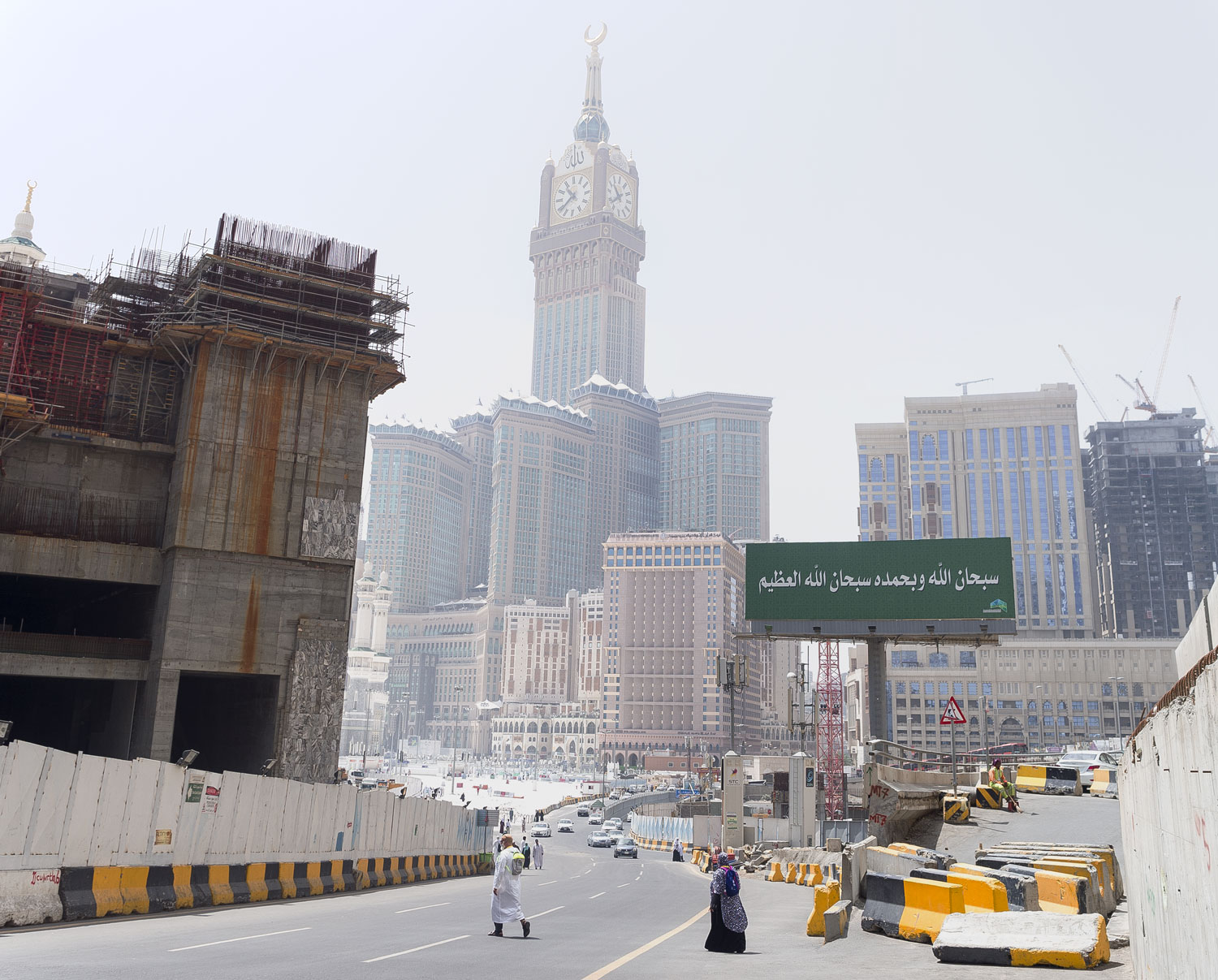
A free shuttle runs from the mosque to the nearest hotels. It has four seats in a row. When the bus is full, one of the seats in the row is additionally folded into the aisle. The seat upholstery is soaked with sweat. It has long been cracked and the foam is peeling off in pieces. No air conditioning on the bus, it’s suffocating. In the evening, a huge queue forms at the stop, which breaks through and curses its way into the poor vehicle.
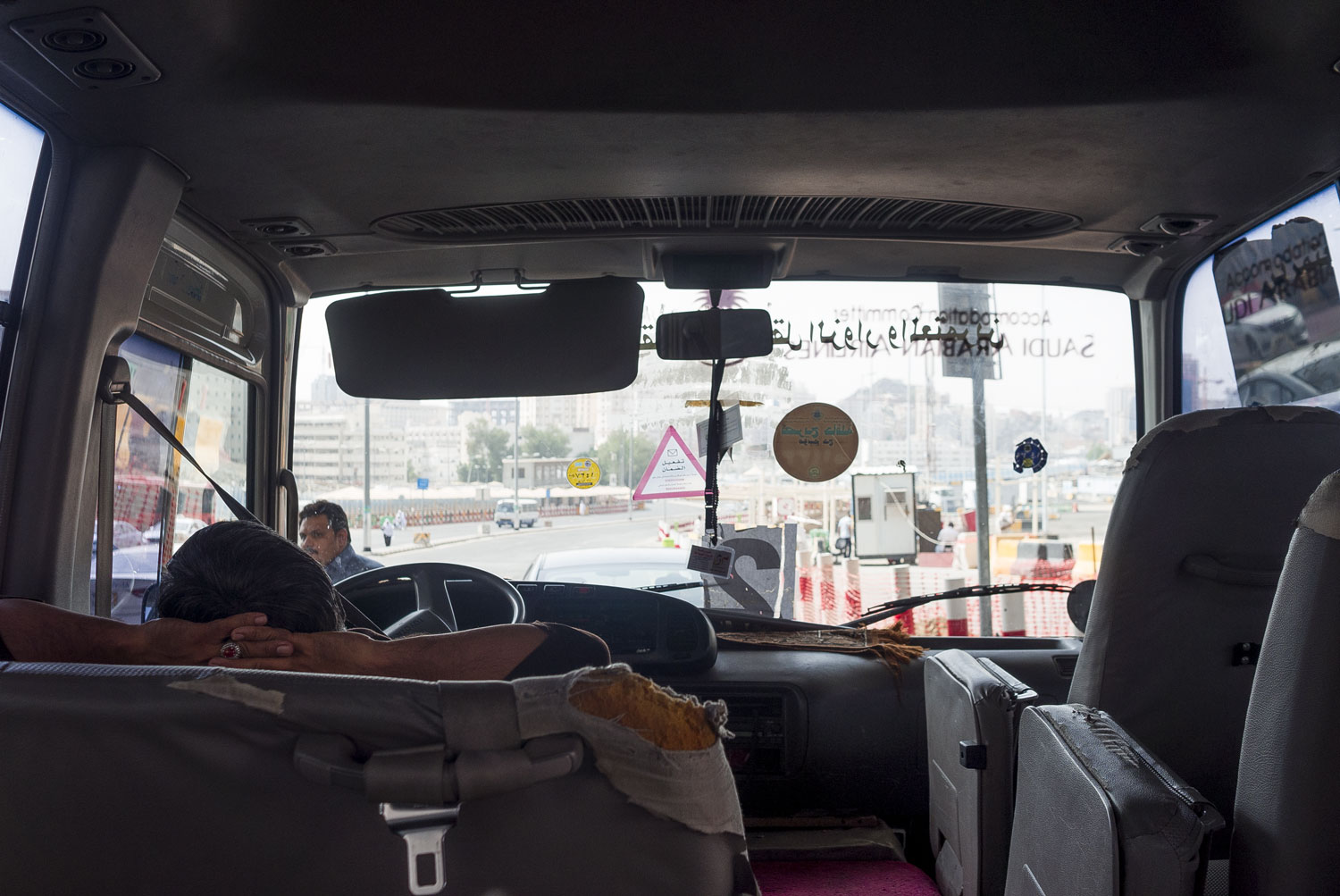
The attitude towards people in Mecca is animal. As in all of Arabia, there is no transportation here in any form. There are no buses, and no metro. They haven’t even come up with sidewalks in Mecca. People walk along with the flow of cars, swallowing dust in infernal heat.
A typical major street in Mecca is reminiscent of India. No pedestrian crossings in the city: neither overground nor underground. People cross the road wherever they want. Roads don't even have markings.
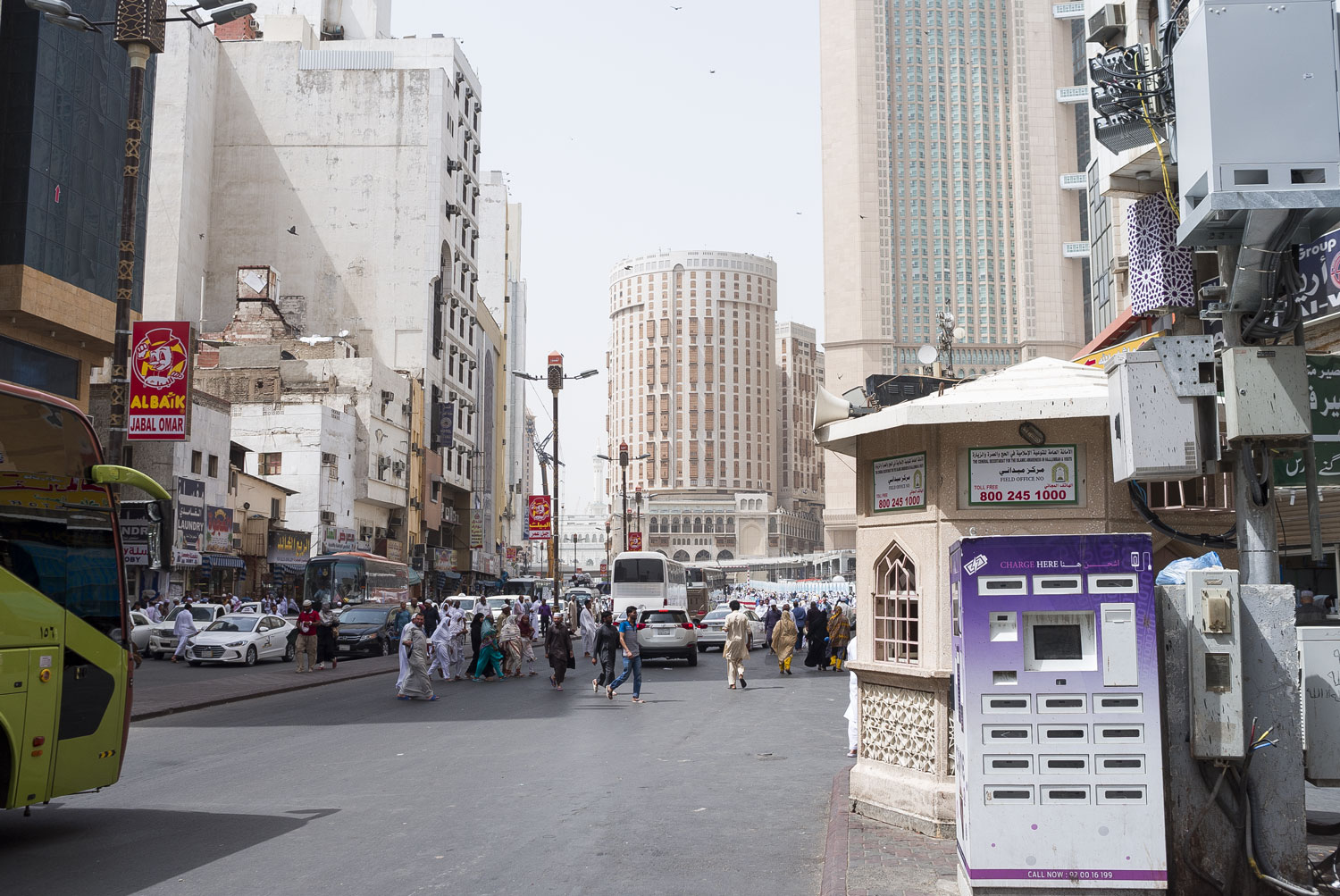
Crossing the road across is only half the trouble! When all of Mecca goes to prayer at once, crowds walk along the road, blocking traffic. Does anyone really need to drive during that time?
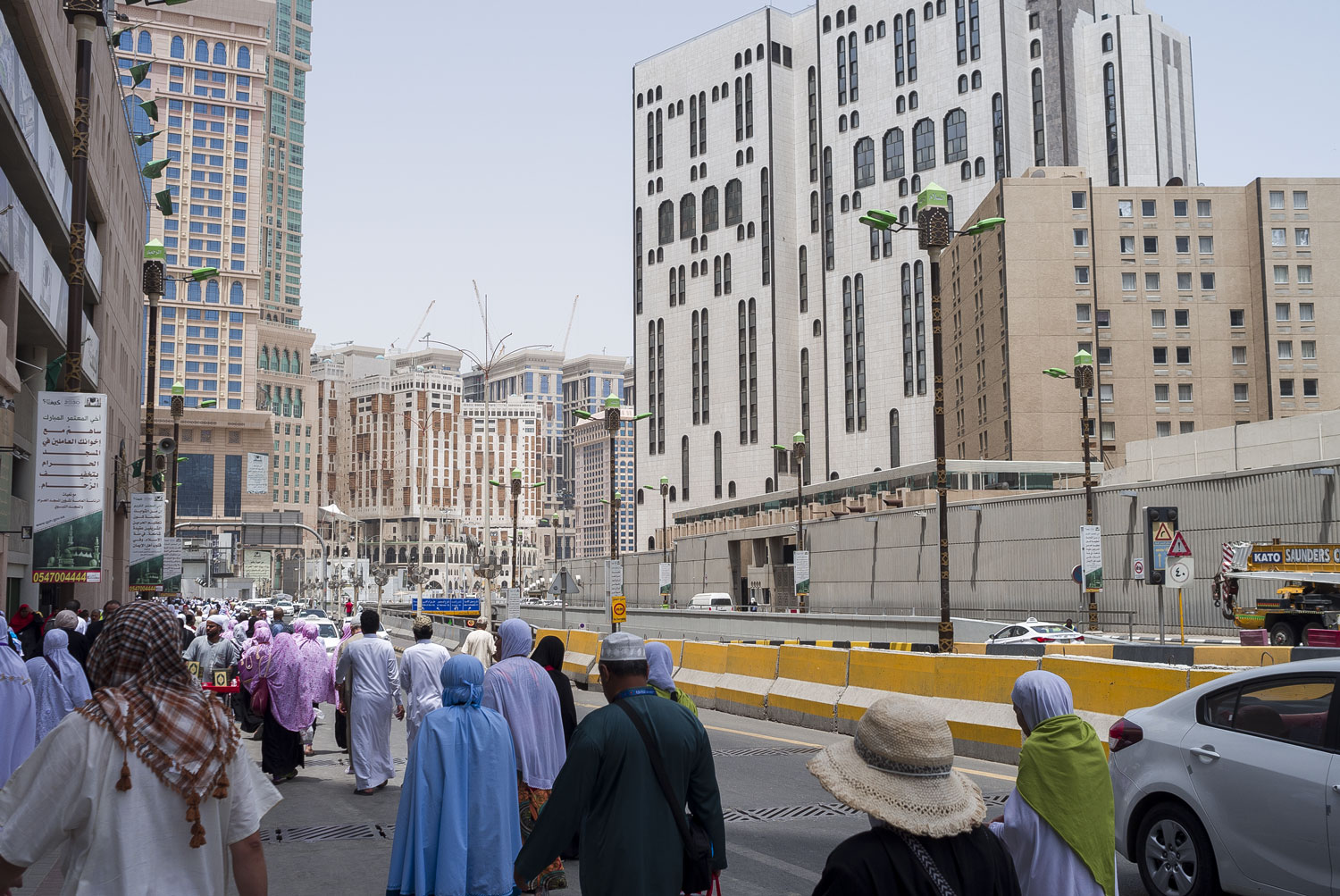
The only transportation in Mecca, as in all of Saudi Arabia, is taxis. In Riyadh, Reader already got acquainted with Saudi taxi drivers who offer to drive even if a person just stepped out to smoke.
Unlike Riyadh, taxi drivers in Mecca are not pushy, but rather insolent; and they double the prices after prayer when the crowd comes out of the mosque.
Don’t want to pay? Walk in the heat and breathe exhausting gases.
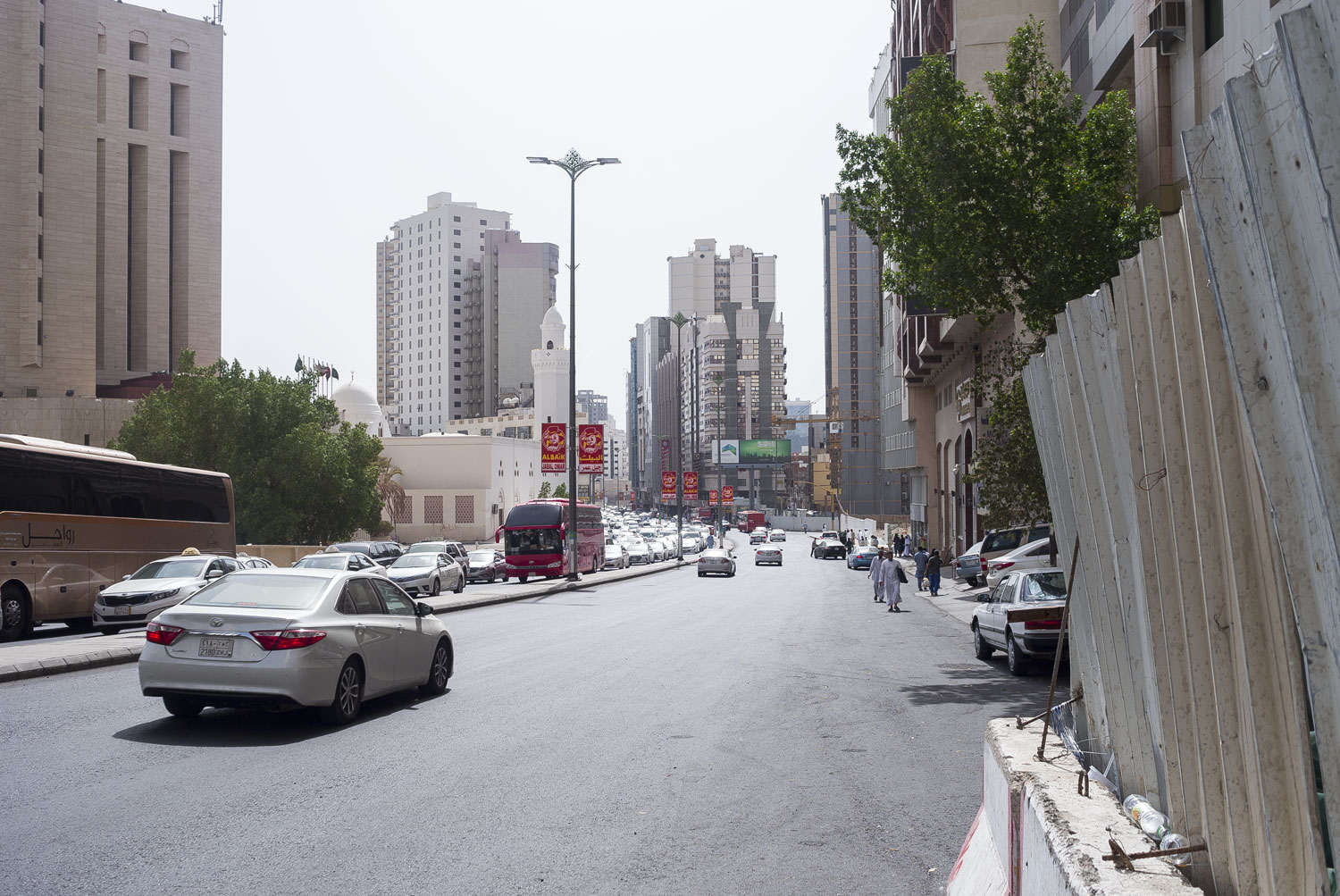
The layout of Mecca’s streets is clearly visible from above. One sidewalk is missing, and the other is piled with concrete blocks. Not even a hint of urbanism. For Saudis, pilgrims are like a flock of sheep that will endure any abuse for the sake of holy places.
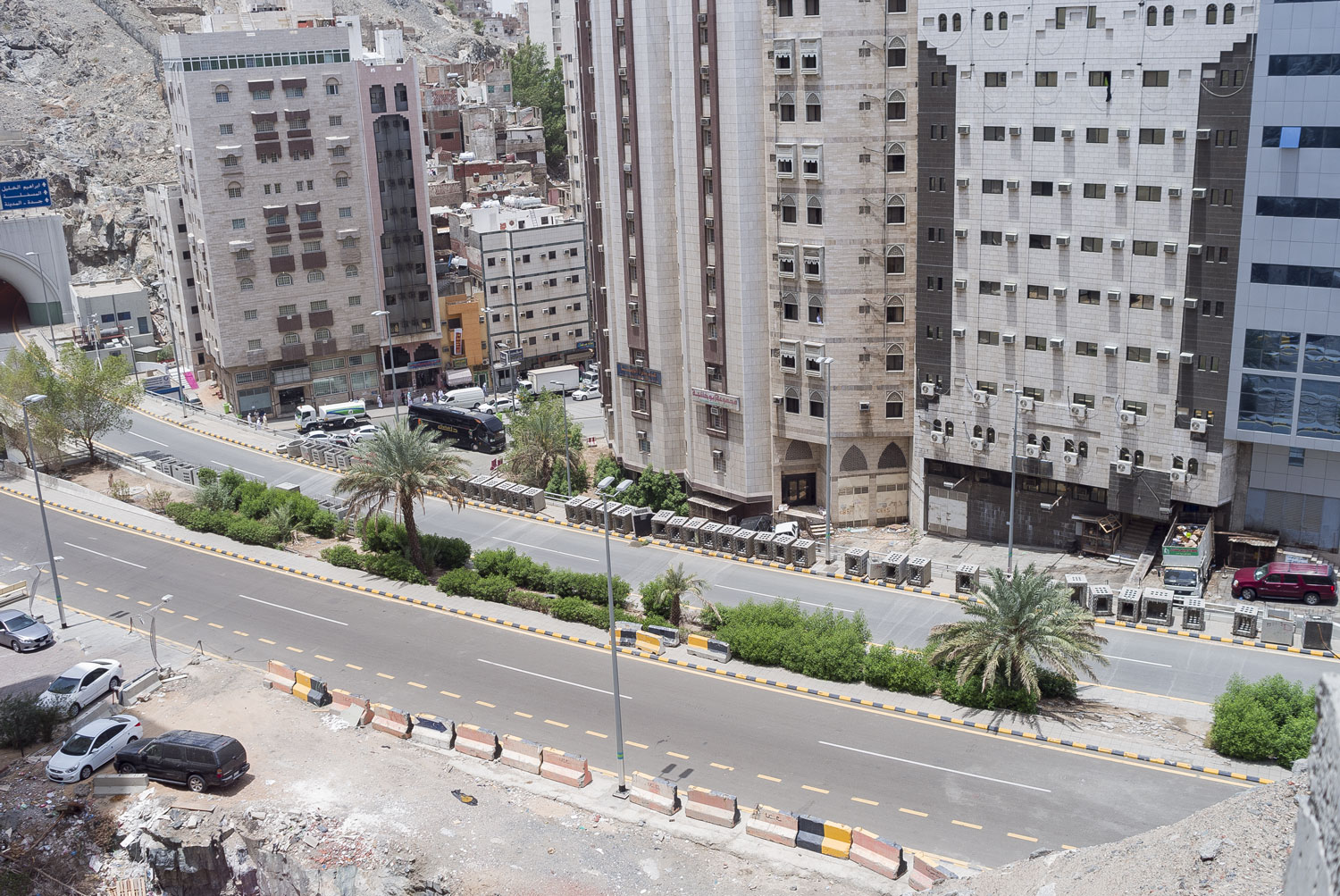
With the amount of money that Mecca is raking in, they could have built a second Dubai. But Mecca is just dirty slums.
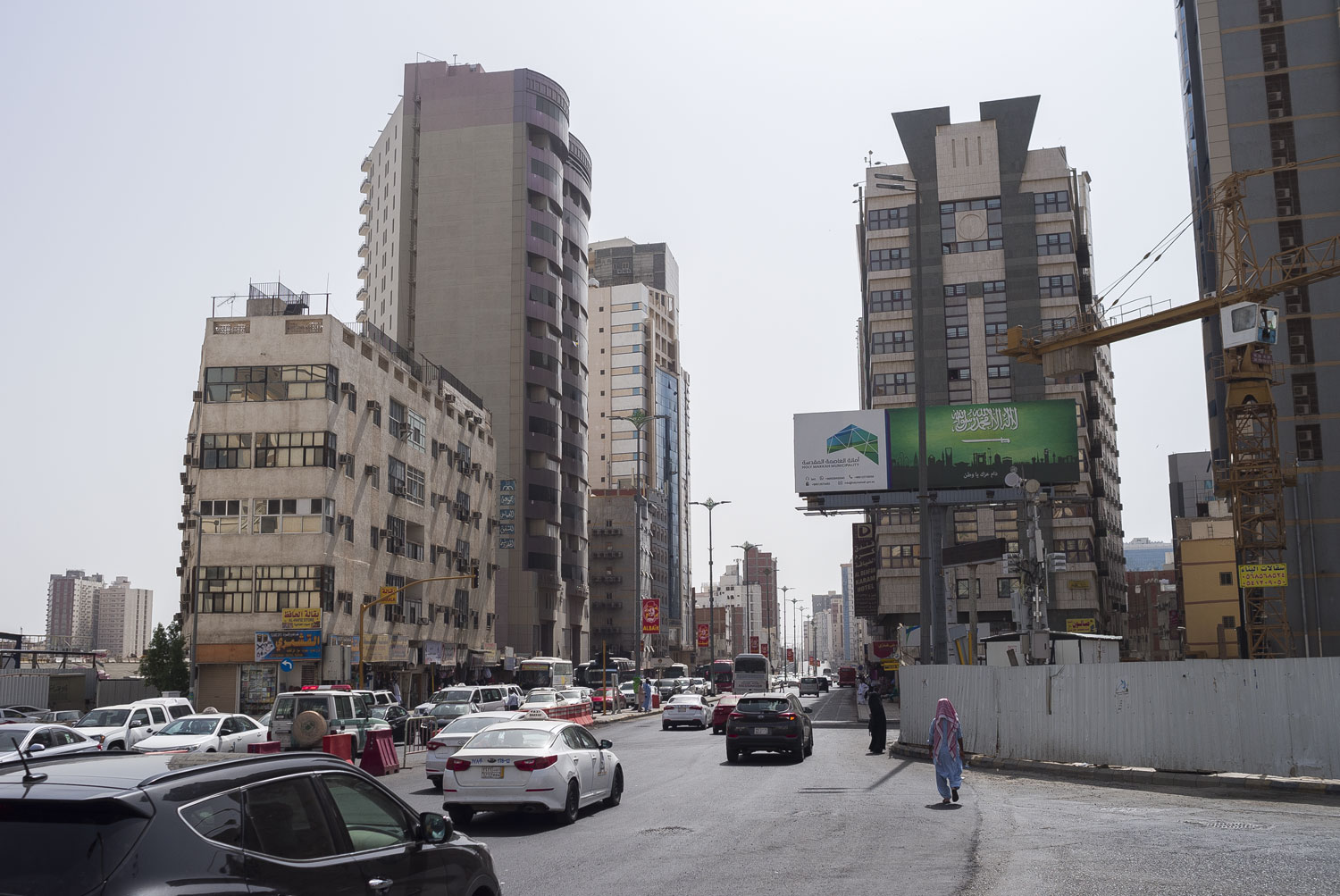
It’s impossible to see all of Mecca in one go. The city is large and disconnected, the heat is unbearable, and there are only a few hours between prayers to return to the Haram Mosque.
I explored Mecca in parts, entering a new area every day.
It wasn’t always possible to loose the group. Gathering in communities and walking in formation for prayer is the main instinct of a Muslim. No justification for those who decides to pray alone. No place for monks or hermits in Islam.
But sooner or later any system fails. The first time I pretended to get lost in the crowd. The second time I woke up earlier than everyone else and quietly slipped away.
Escape two
Immediately behind the skyscrapers begins an unclaimed area. It’s either a closed highway or a sidewalk as wide as a freeway. This road is used by the main stream of pilgrims coming to the mosque.
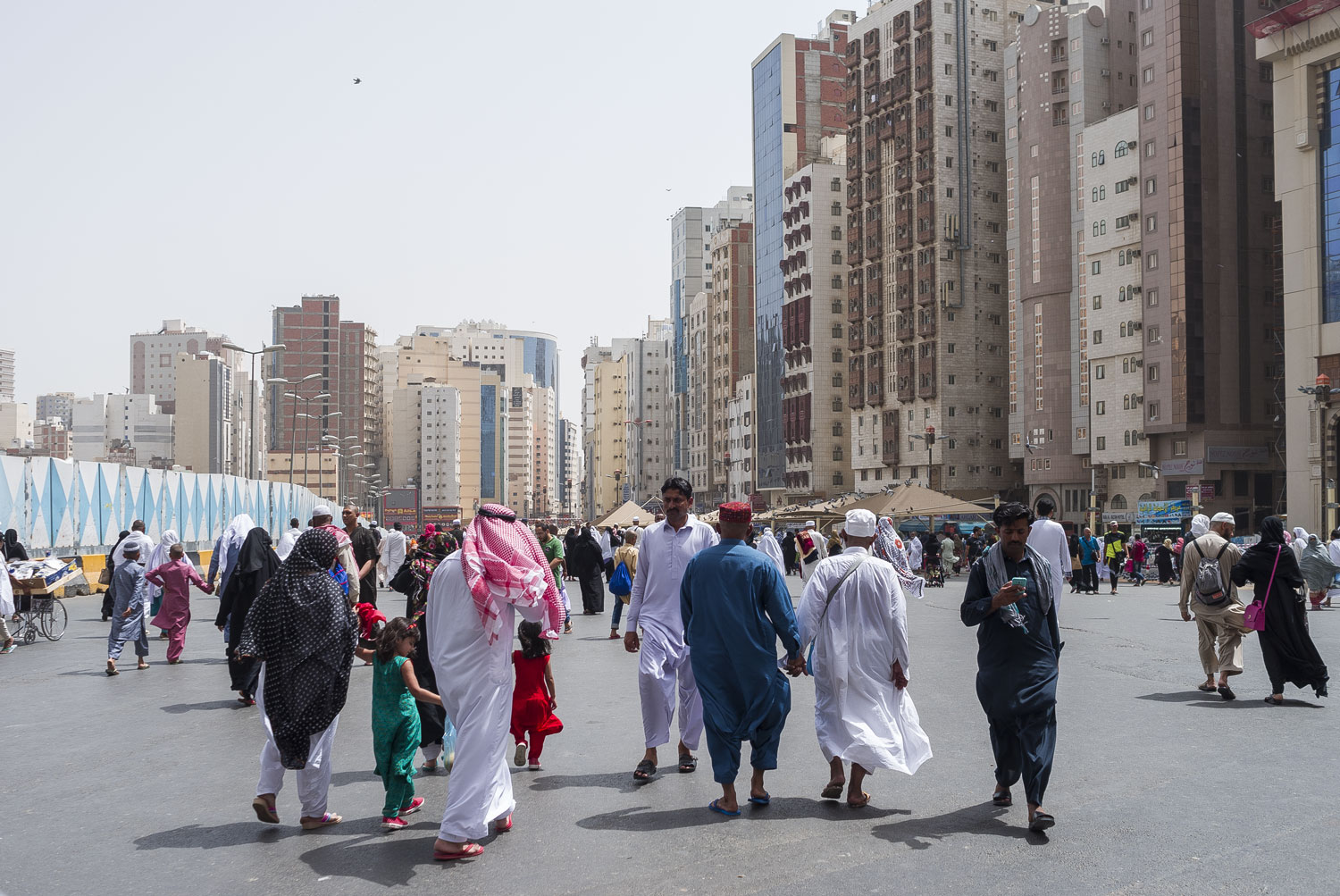
This path is overgrown with an unwashed market, and in the distance, appear dirty color panel buildings.
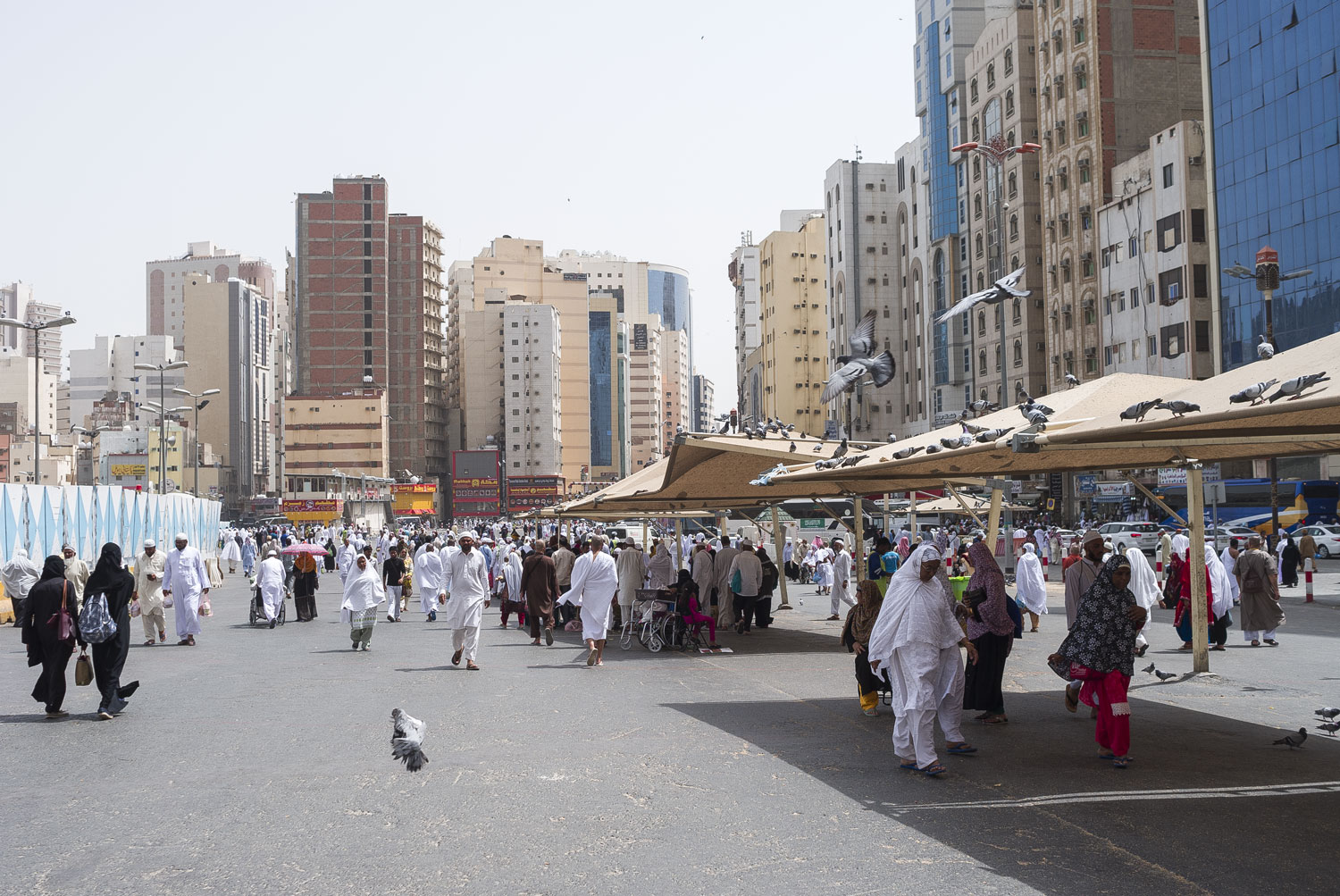
The market rapidly turns into a dump. Herds of gray pigeons graze on the asphalt meadow, devouring scraps from nearby snack bars.
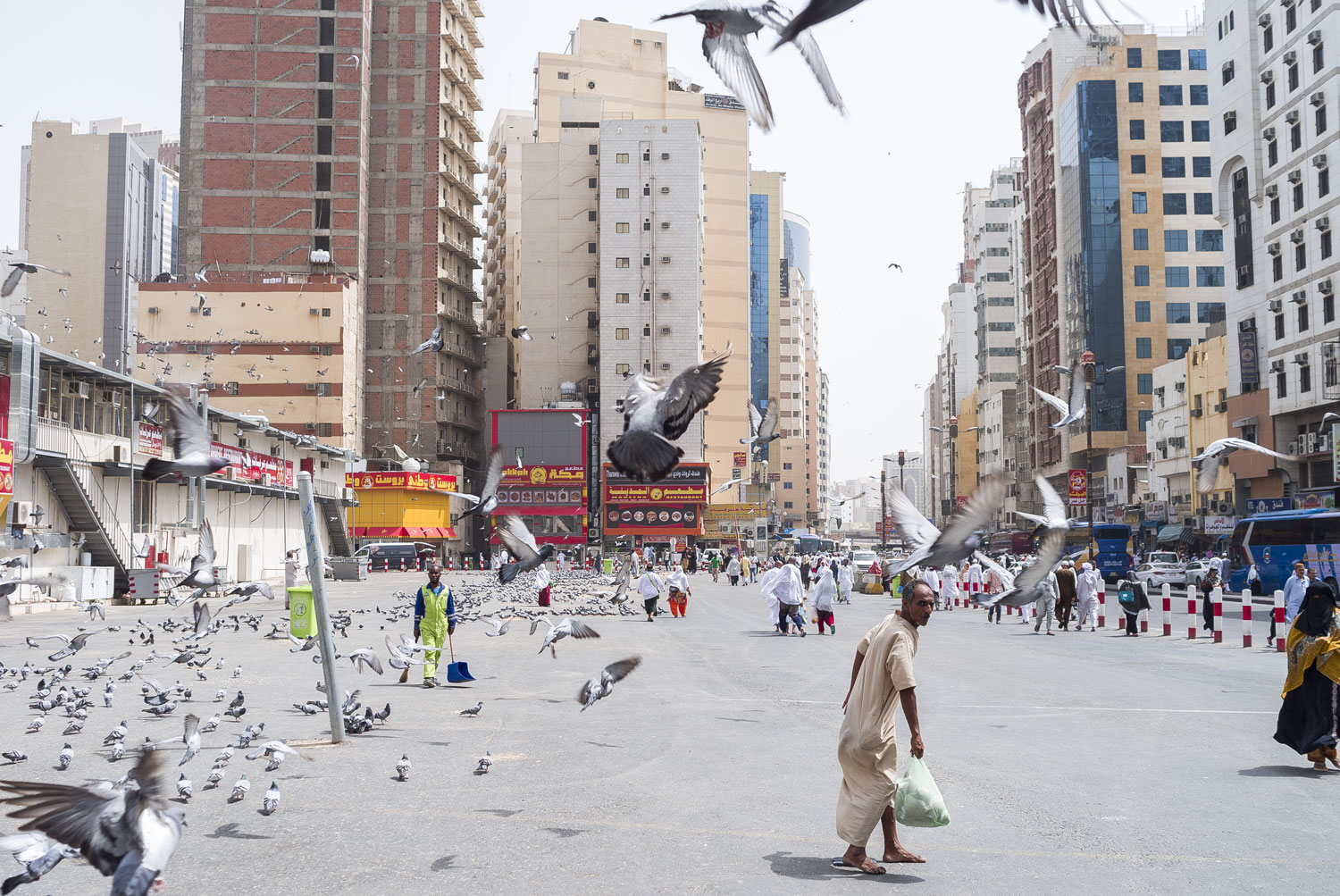
Looking back reveals a new view of the skyscrapers. As it turns out, the tallest building in Saudi Arabia is growing in the middle of a dump. Who would have thought?
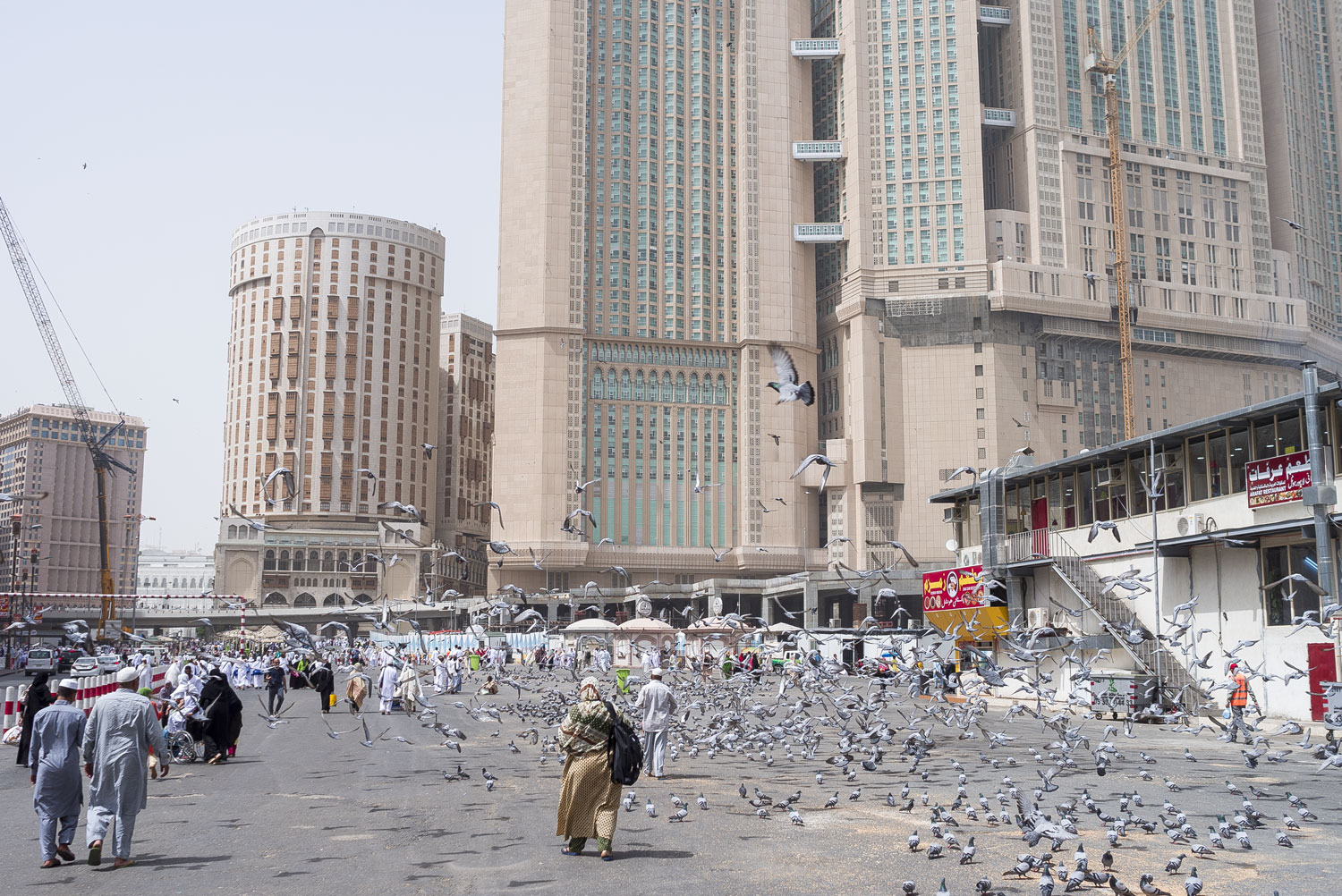
Grubby panel buildings turn out to be uninhabited. These are hotels — endless hotels, growing for kilometers along the streets of Mecca.
During the Hajj, housing prices skyrocket, but for the great goal, pilgrims are ready to live in any conditions. Even in expensive hotels, they often rent one room for four people — four unknown individuals, turning the hotel into a hostel.
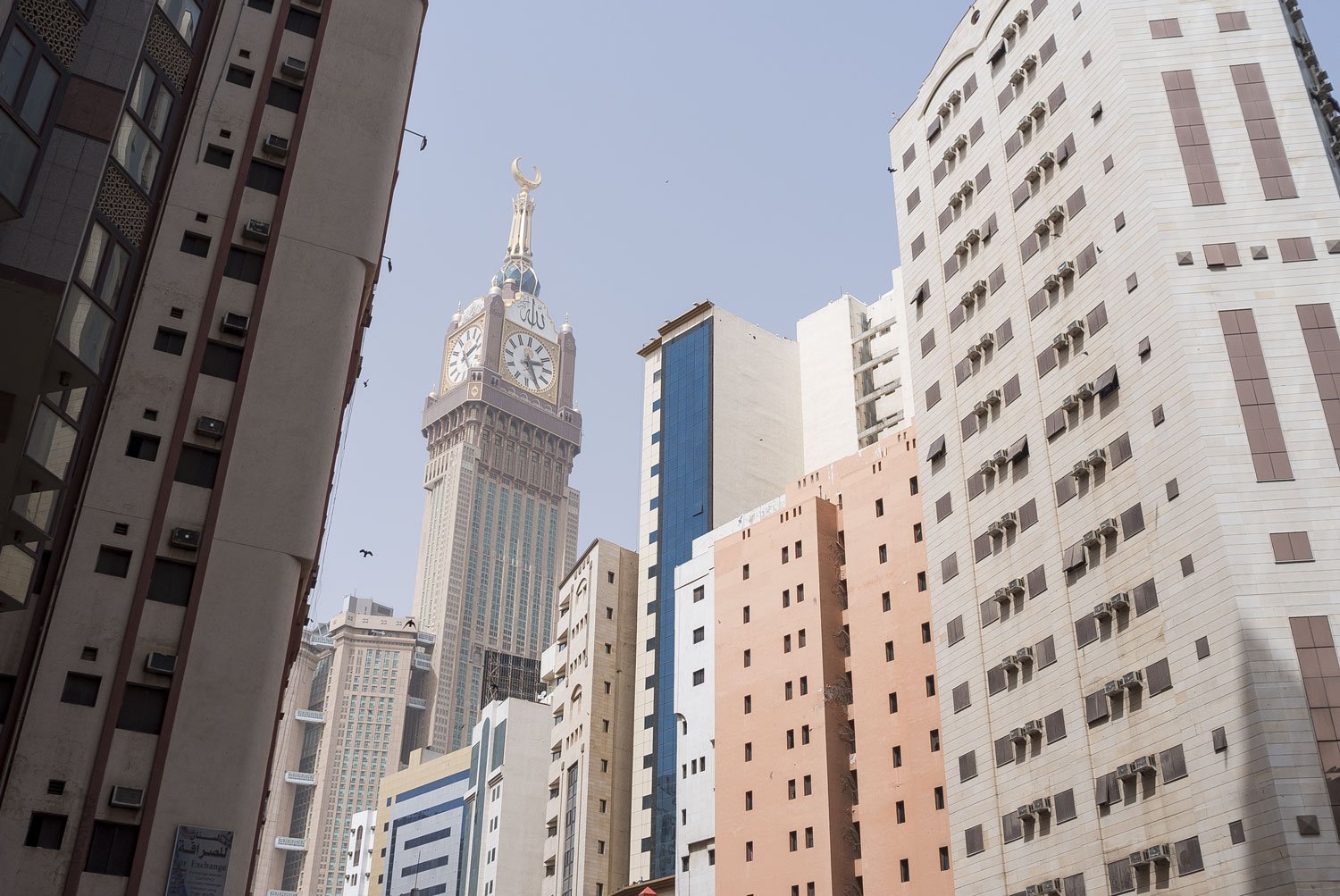
Hotels are built at haphazard. It’s just a pile of shapeless concrete barracks. There is no infrastructure nearby. People leave the hotel and get straight to the road. Crowds at the entrance block traffic, swear about something, and almost fight. At this time, a bus brings in another batch of pilgrims, ripping apart the streets at the seams.
The authorities don’t care about this. The self-indulgent Meccan nomenklatura languishes over their wealth and pours money into the mosque to attract even more tourists. How will they move around? Even if on hands with stilts.
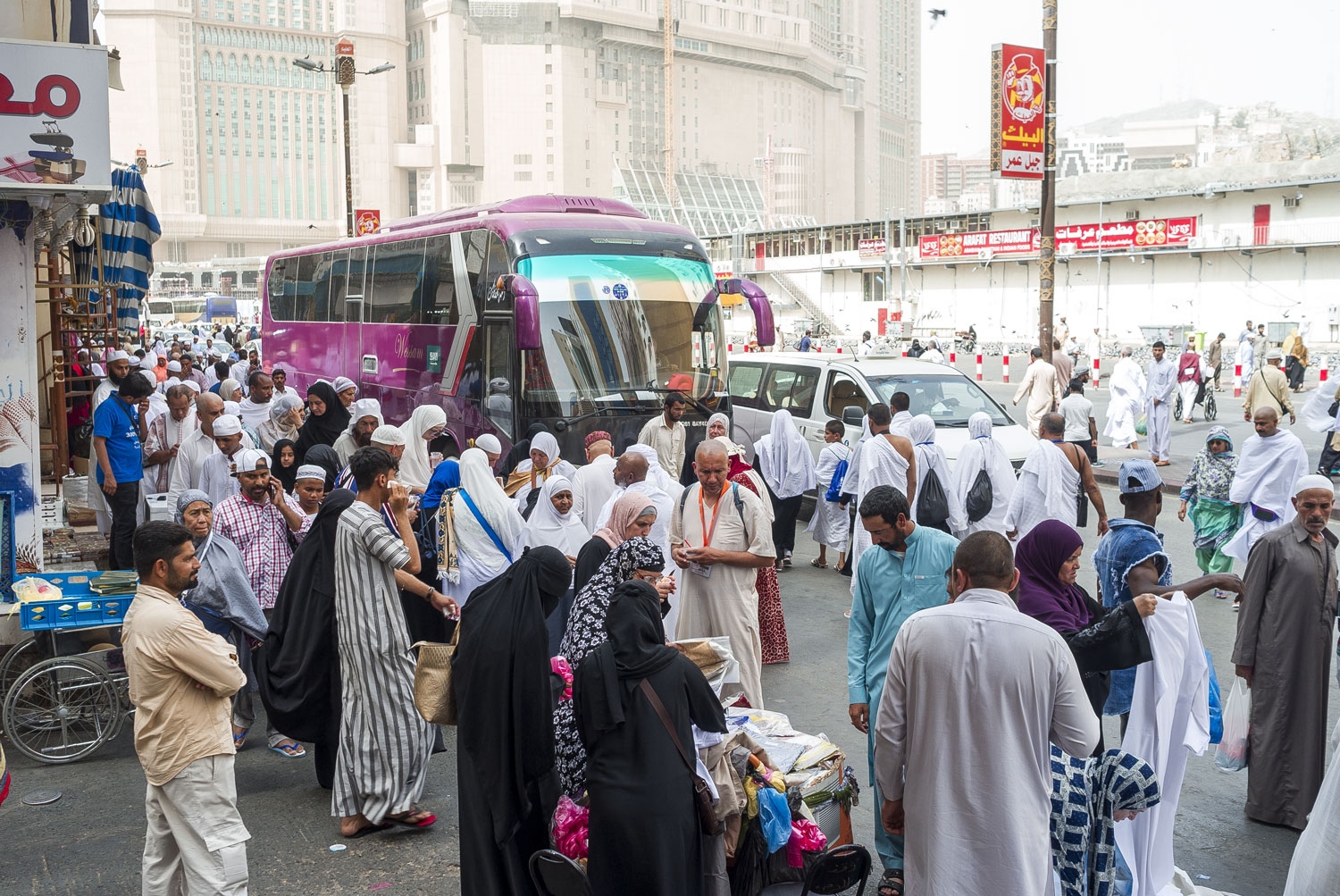
In which country was this photo taken? No, it’s not India, mai frend. This is the “richest” Saudia.
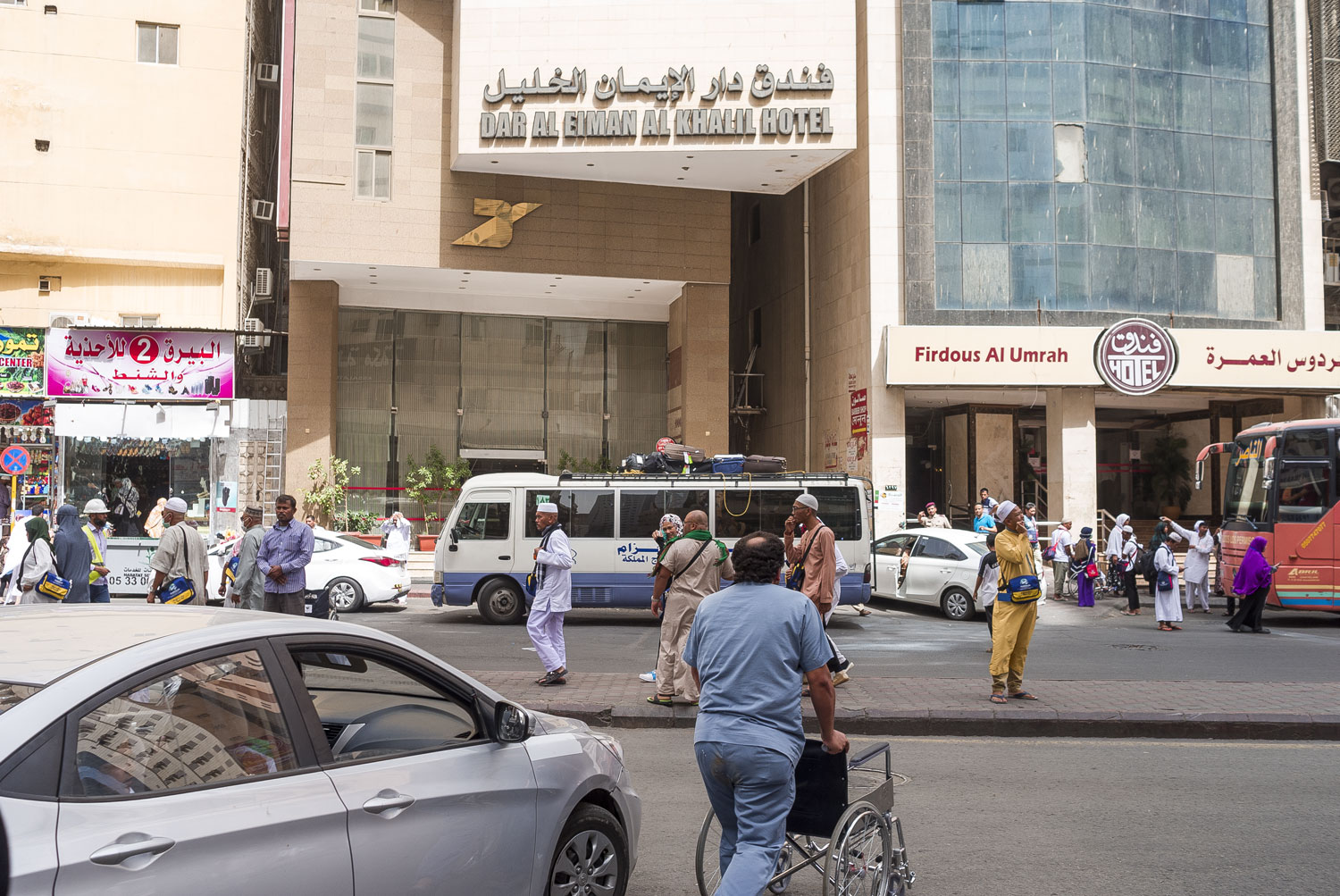
Escape three
For the third time, Said Ahmed couldn’t stand the heat and went back to the hotel, while I pretended that I wanted to bask in the sun. I hobbled my way to the shopping center in the Al-Bait tower and found a local Starbucks where they served iced coffee.
Throughout the whole Saudi Arabia, exists sexual segregation. All cafes have two areas: one for single men and another for families. The same system is adopted worldwide in mosques. The entrance to a mosque is different for women and men, and they pray separately.
The Forbidden Mosque in Mecca is the only exception to this rule. Around the Kaaba, men and women can pray together. Everything else goes without exceptions.
So the Starbucks is divided into two parts. I am sitting in the men’s section. When you are in Mecca and barely dragging your feet from the heat, try drinking iced coffee while reading Dawkins. Refreshing and invigorating.
But let’s get back to the city.
Mecca is described in the Quran and Hadith as a paradise place where green grass, trees, and grapes grow. This even confuses Muslims themselves. The real Mecca is a city that is unsuitable for living — Allah knows how it became the center of Islam.
Mecca is located on mountains and surrounded by a desert. No grass is here, and almost no trees, and certainly no grapes. What grapes, for Shaitan sake? How even was a city built on these rocks?
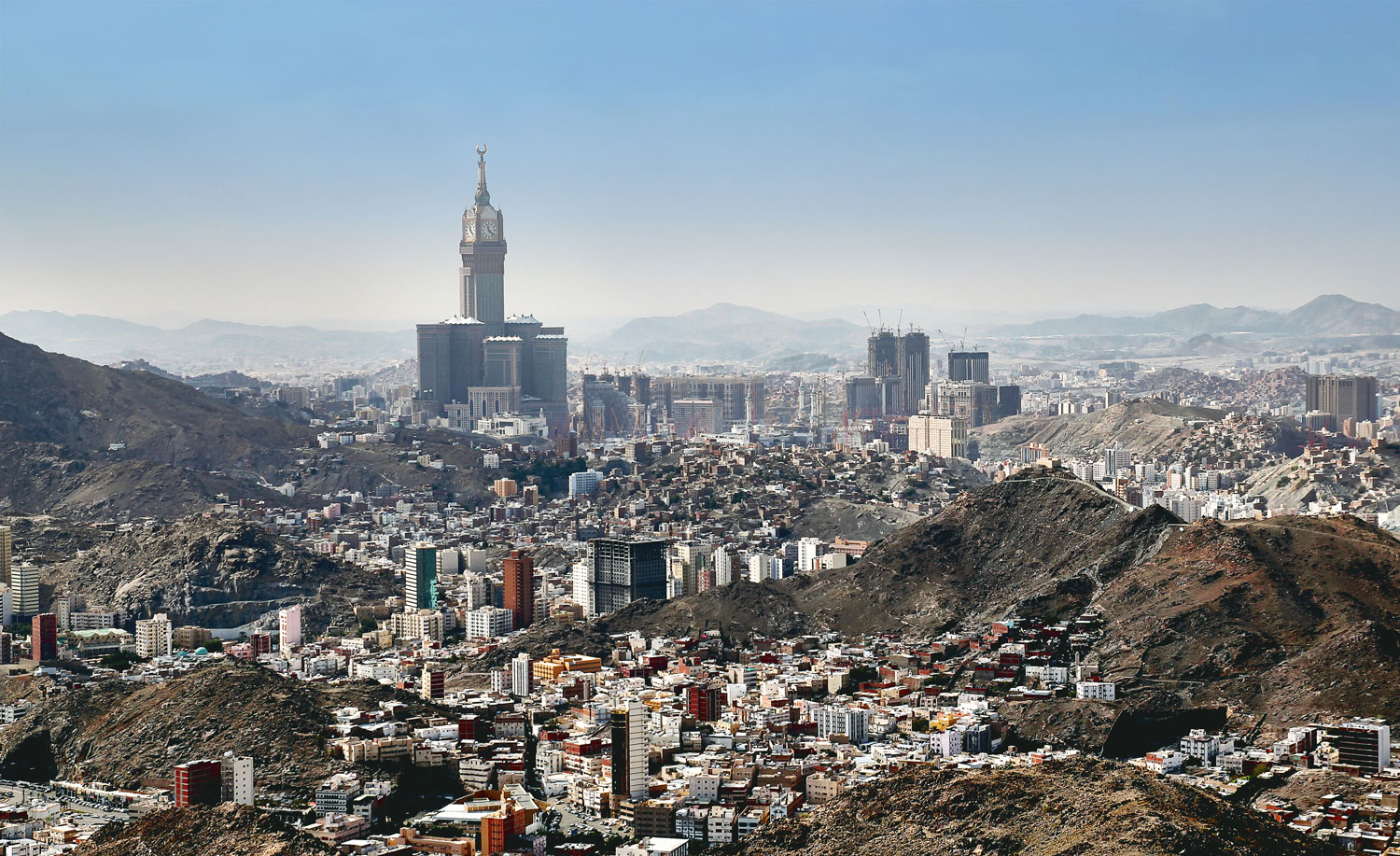
All roads to Mecca lead through tunnels drilled in rocks.
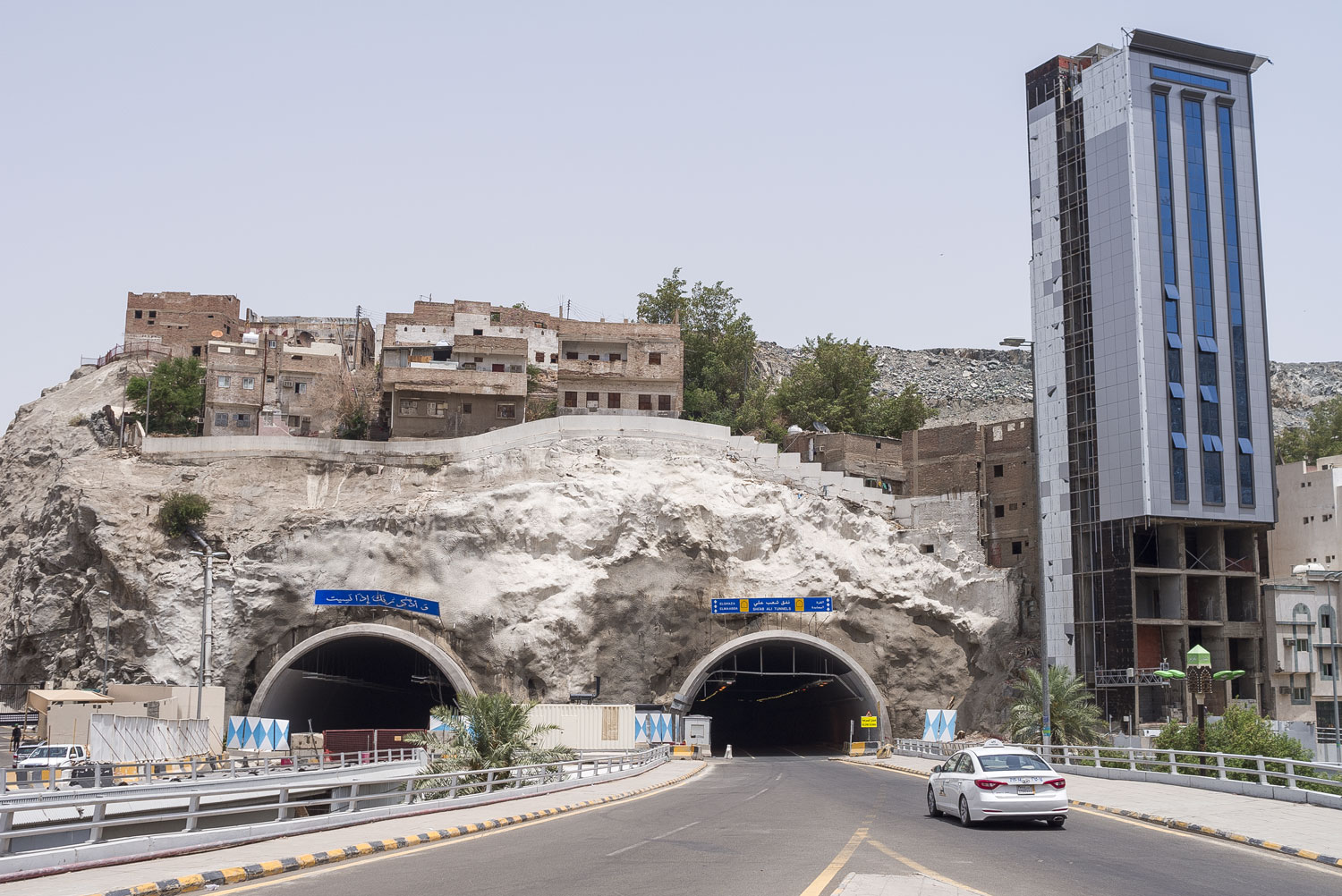
On these same rocks stand residential buildings, which I have been looking for so long. This is how the Meccan proletariat lives: in brick barracks, abandoned far away from foreign eyes.
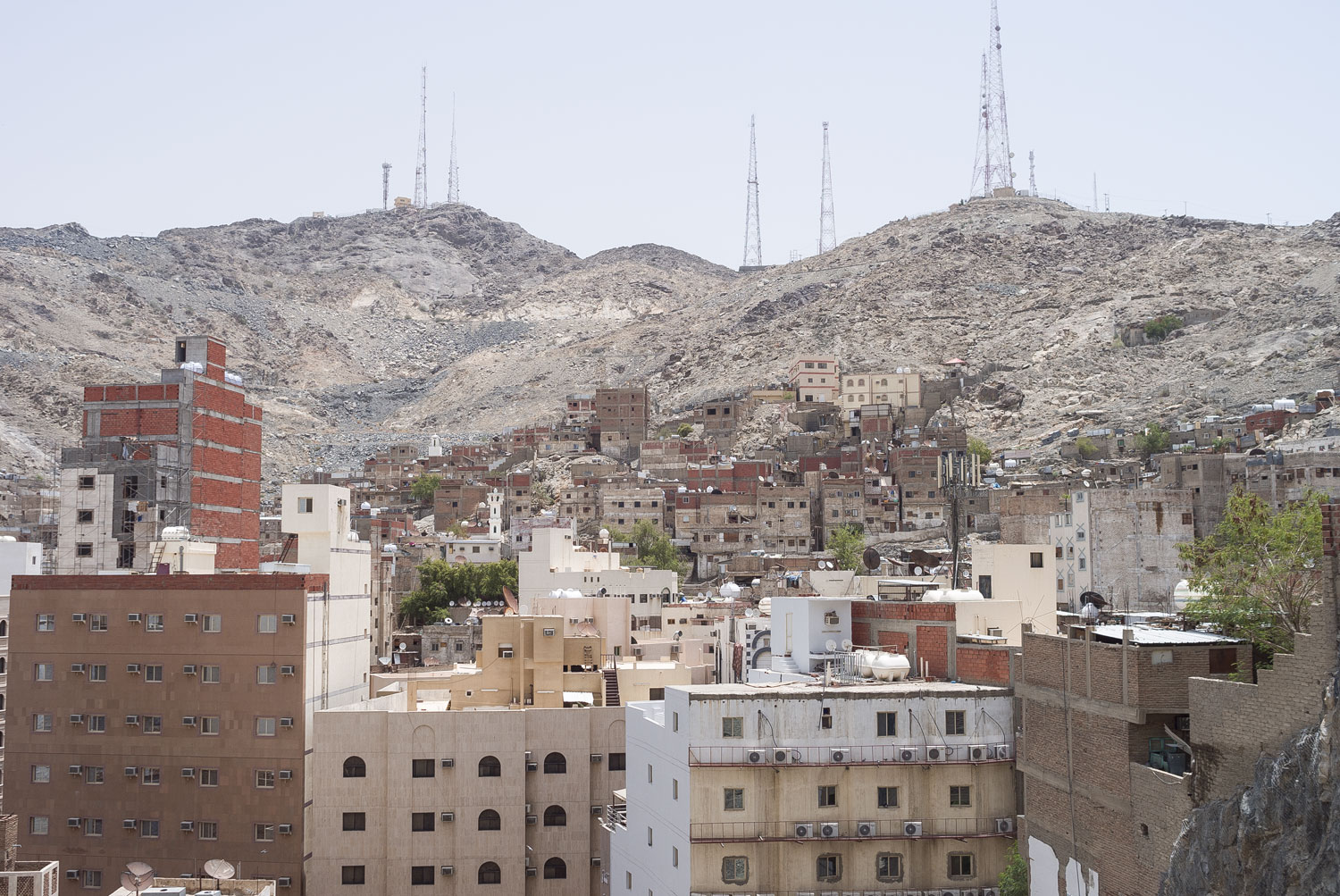
Mecca grows on mountains like lichen grows on trees. You walk along the road, look up — and see houses spiring on a steep cliff.
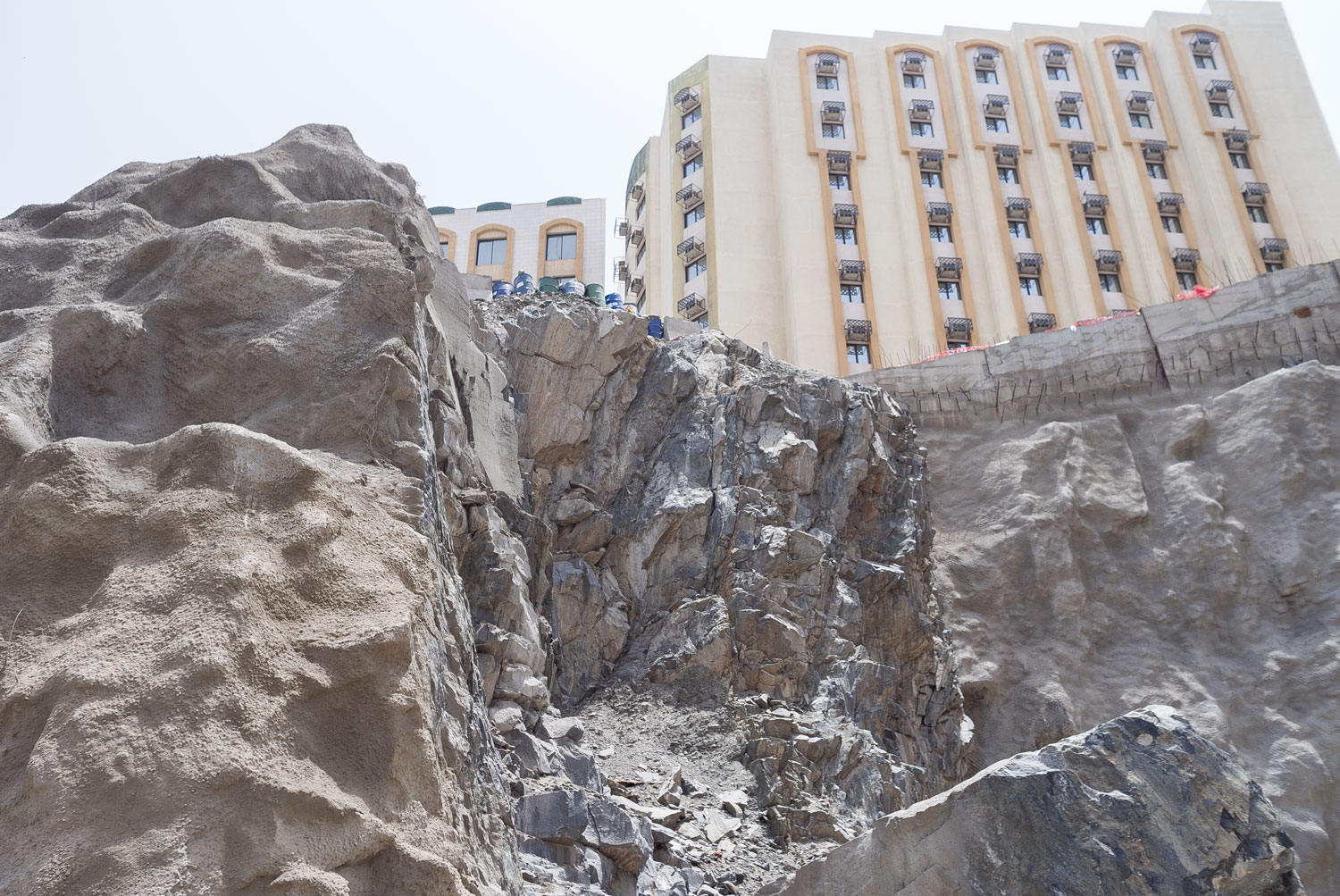
Streets climb up the rocks.
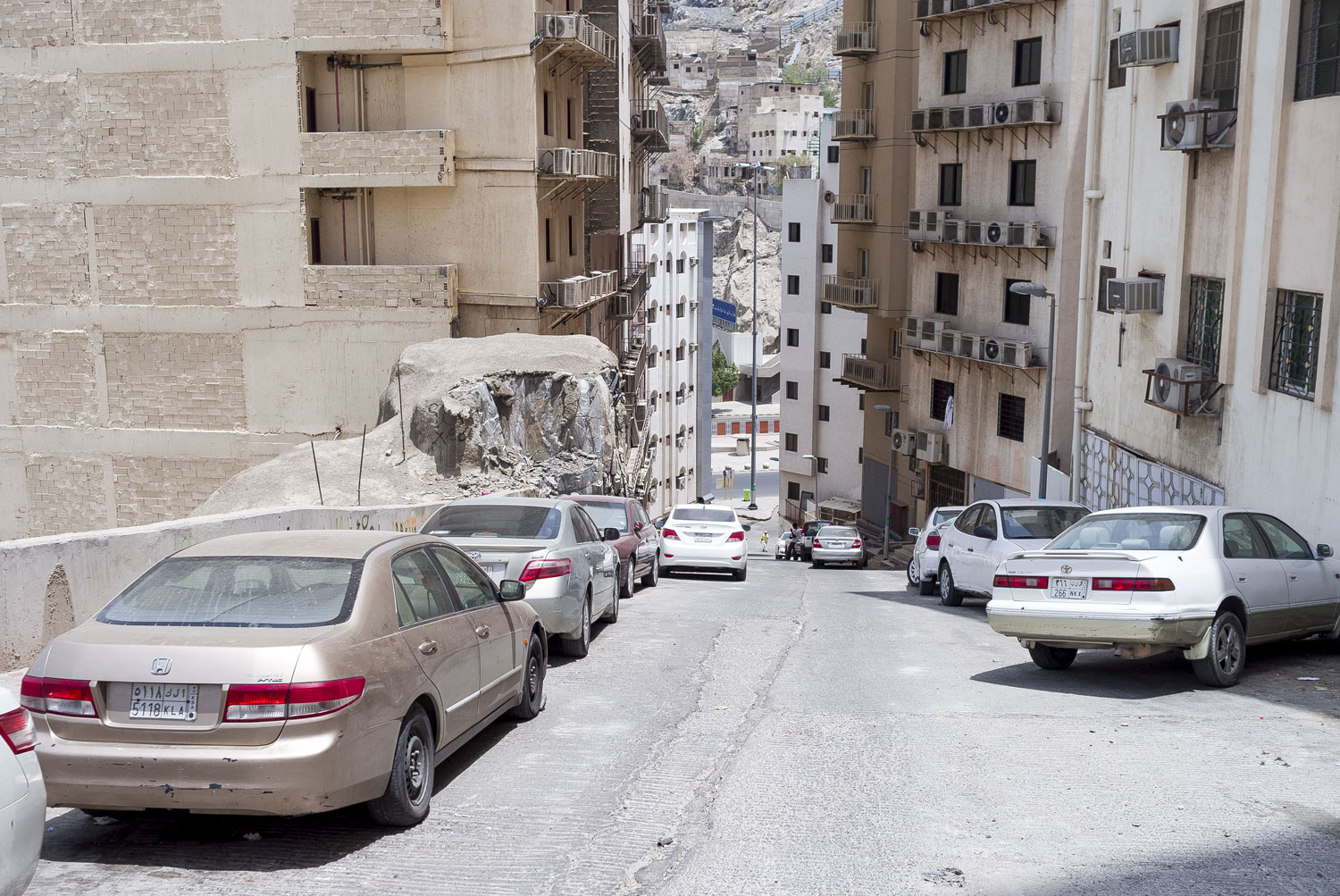
The slope of the streets can beat San Francisco.
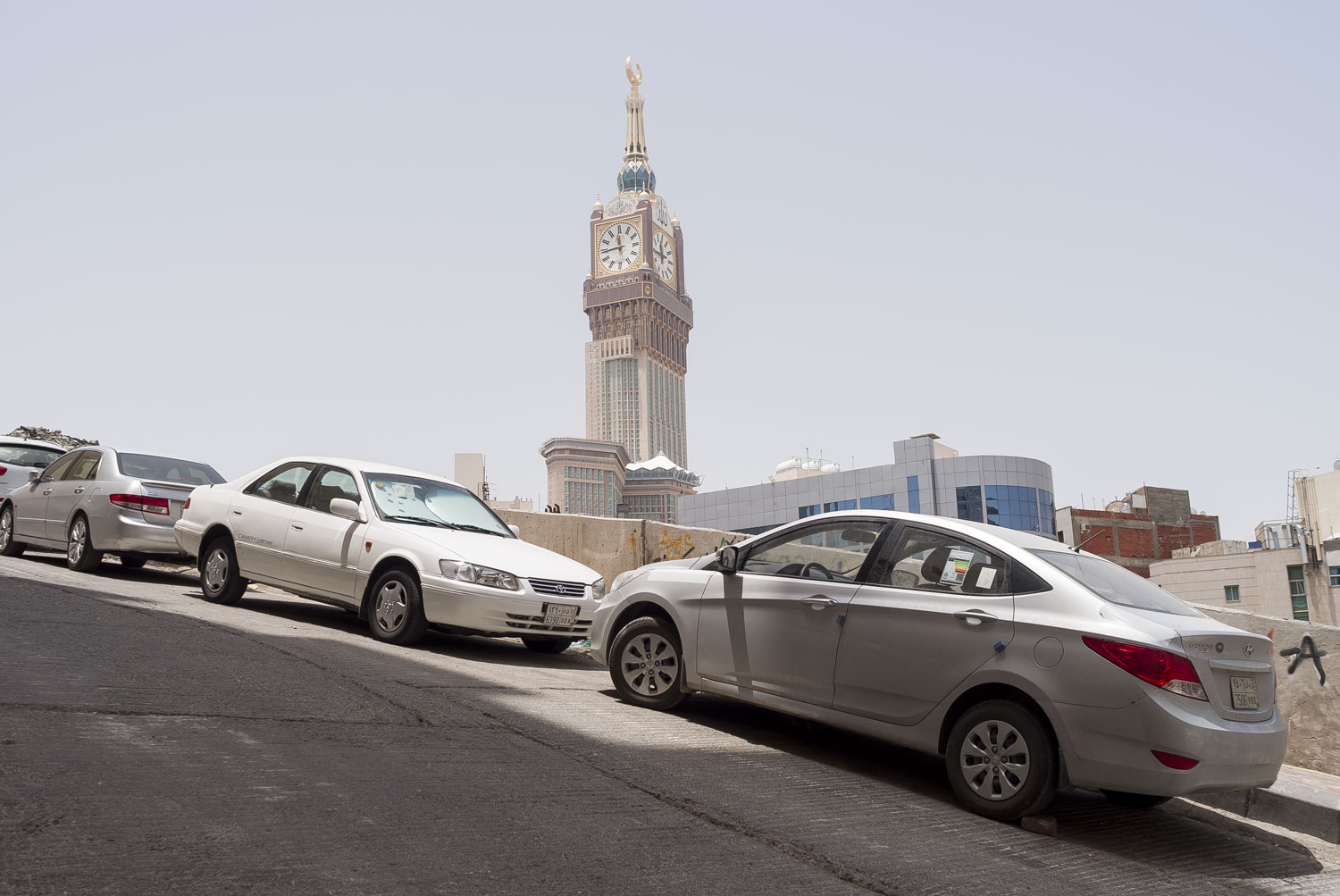
The rocks in Mecca grow in the most unexpected places. Here is an elite hotel, everything around it is flat. But in the courtyard — a huge rock with someone’s house on top.
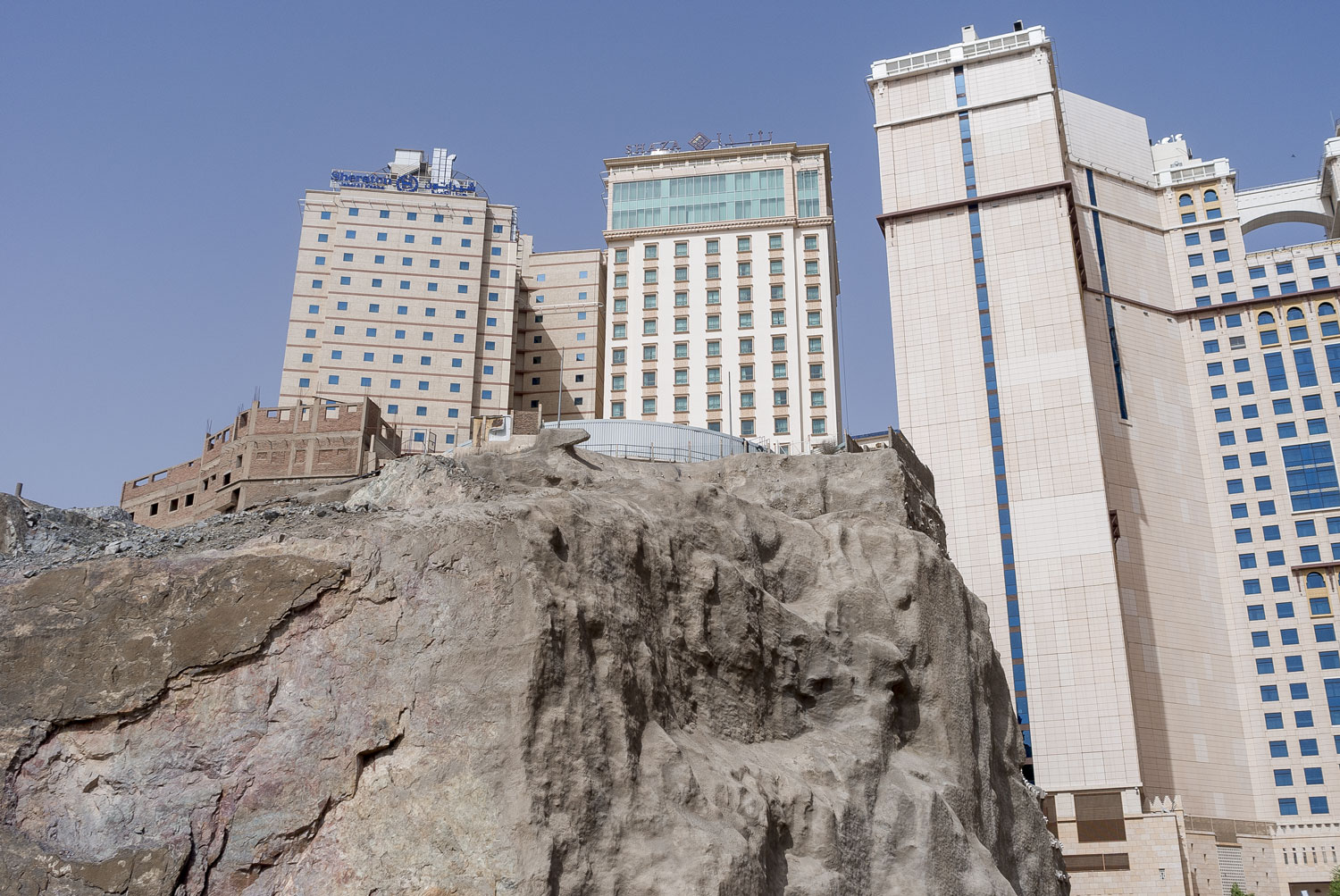
The rocks make Mecca a unique place. The city is forced to expand, but the mountains hinder construction. Here opens up the only great thing that the Saudi authorities have created. It seems that they have conquered the mountains.
The new Mecca is literally being carved out of the mountains. Round the clock, dozens of jackhammers and excavators pound, crush into pieces, break, and blow up solid monolithic rocks with dynamite.
Mecca literally engraves into the mountains, begnawing a path through them. It has no other choice. In order to survive, Mecca will have to level itself to the ground.
Here and there, houses are literally embedded in the rock.
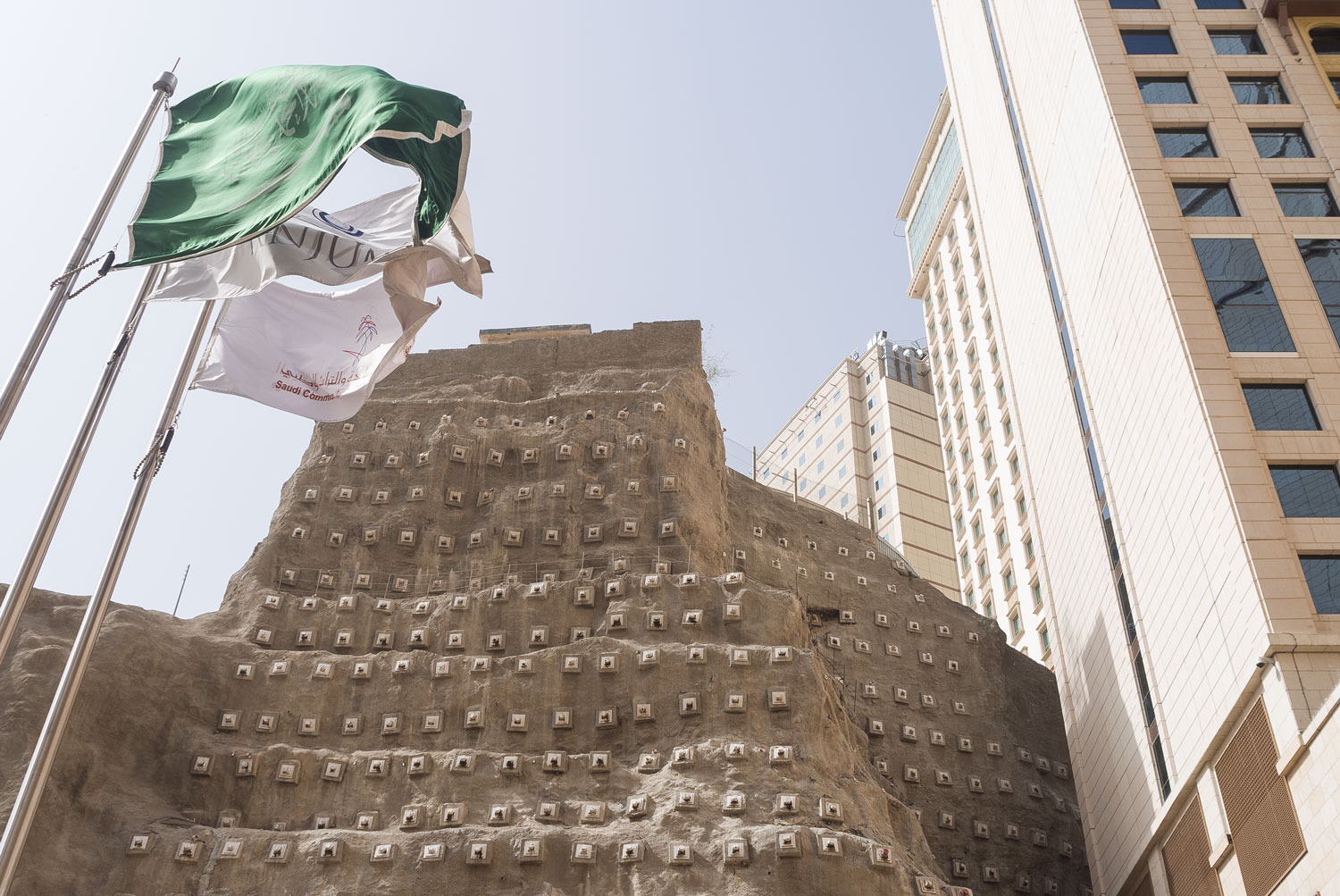
A new piece of mountain, doomed to demolition, is temporarily punctured with iron rods to prevent it from collapsing and crumbling onto people.
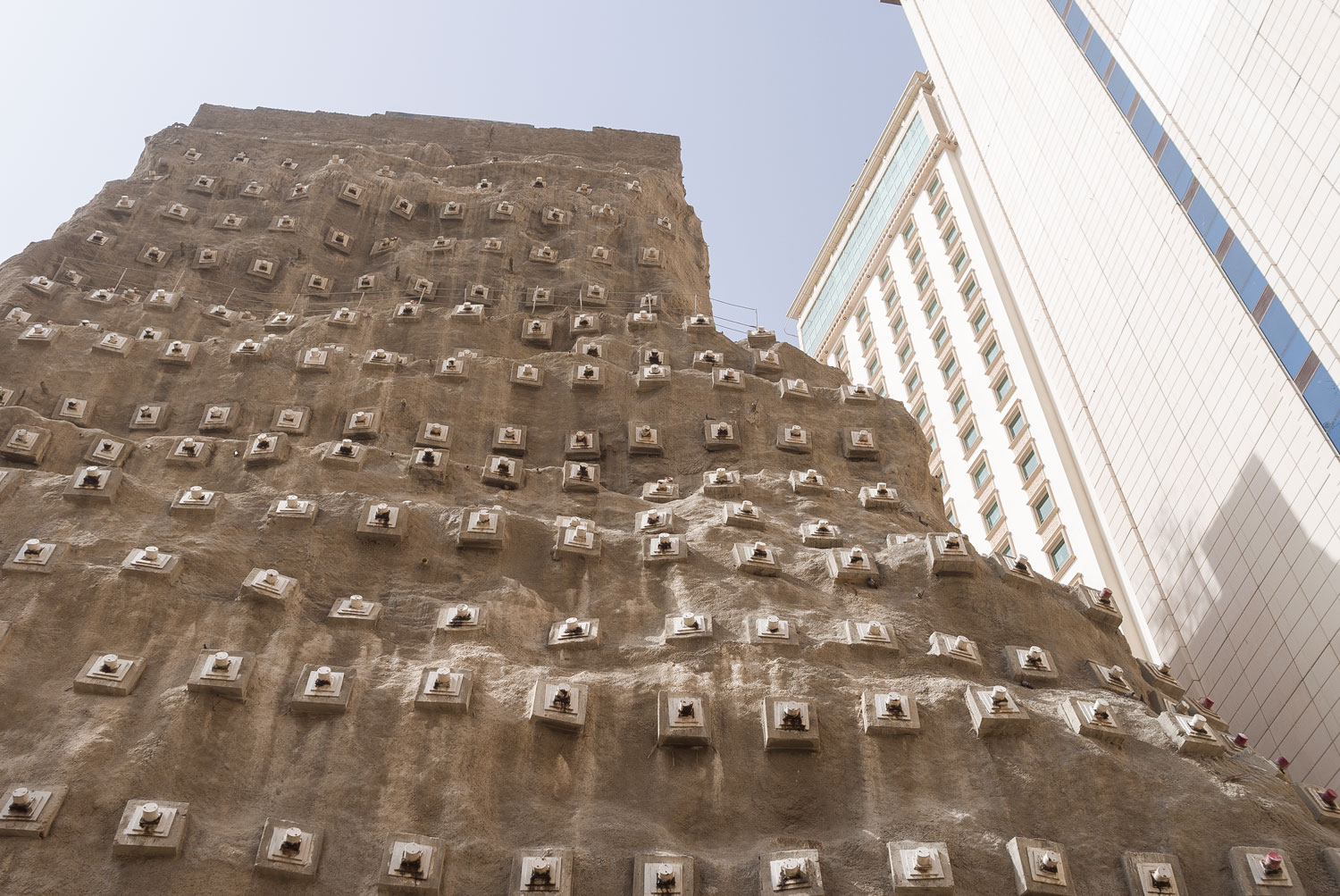
Legend has it that once Muslims were digging a trench to protect Medina and came across an insurmountable rock. Then Prophet Muhammad broke the rock with three blows and saved the Muslims from defeat.
So that Mecca breaks rocks with its iron fist.
Escape four, conclusive
This time I managed to escape by skipping lunch at the hotel. There was still one unexplored corner left in Mecca, the farthest and most difficult. I hesitated for a long time before venturing into these slums. There is no evidence about who lives in these places and how the residents will react to a lost pilgrim.
Behind the mosque was an unremarkable passage leading away from skyscrapers to some distant neighborhoods of the city.
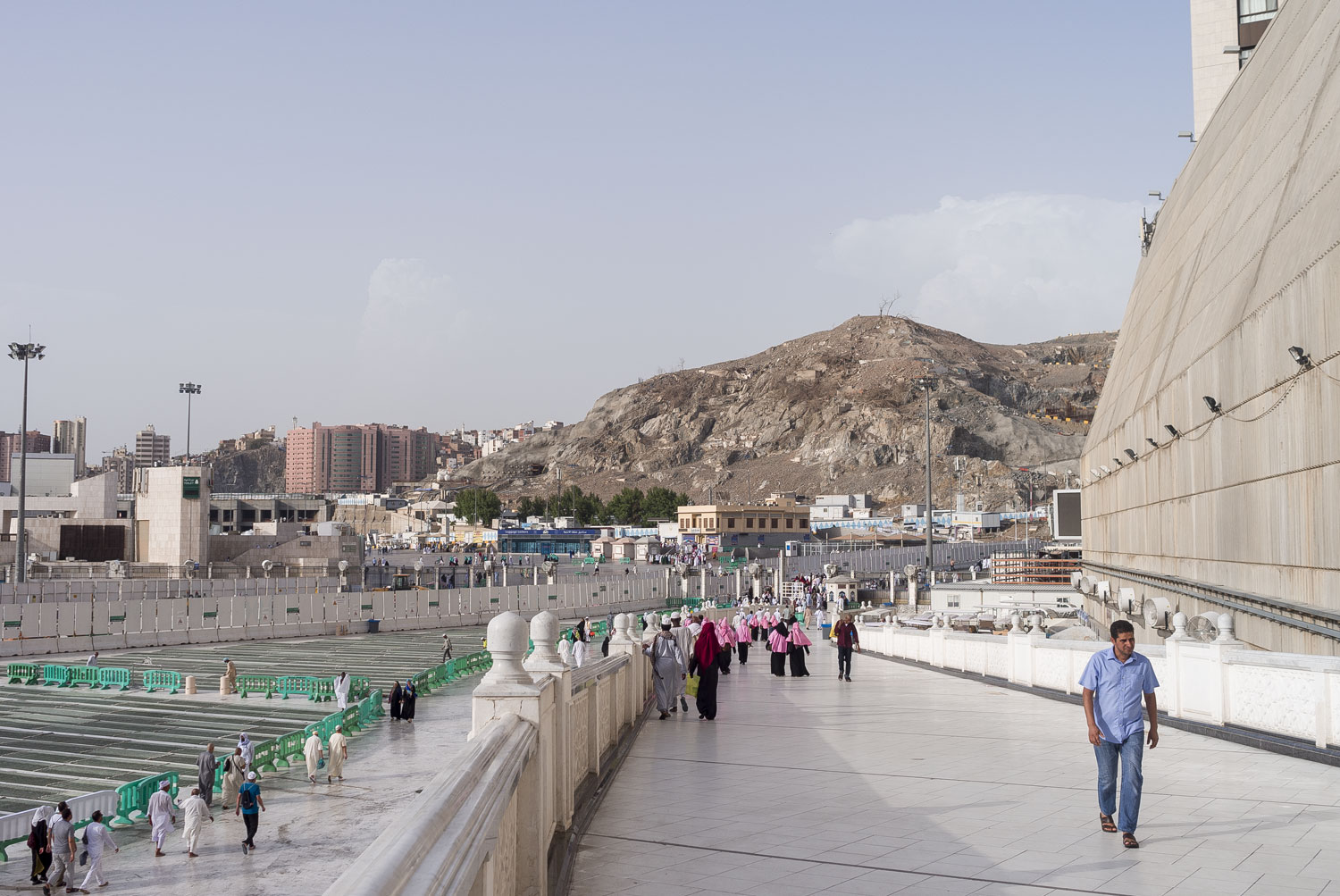
Behind the passage is a source of Zamzam water. It is an analogue of holy water in Christianity. Muslims drink Zamzam during pilgrimage and always take away a five-liter bottle.
The main source of this water is located under the Forbidden Mosque. Apparently, it is thanks to it that Mecca survived as a city. The second source was discovered here, not far from the mosque.
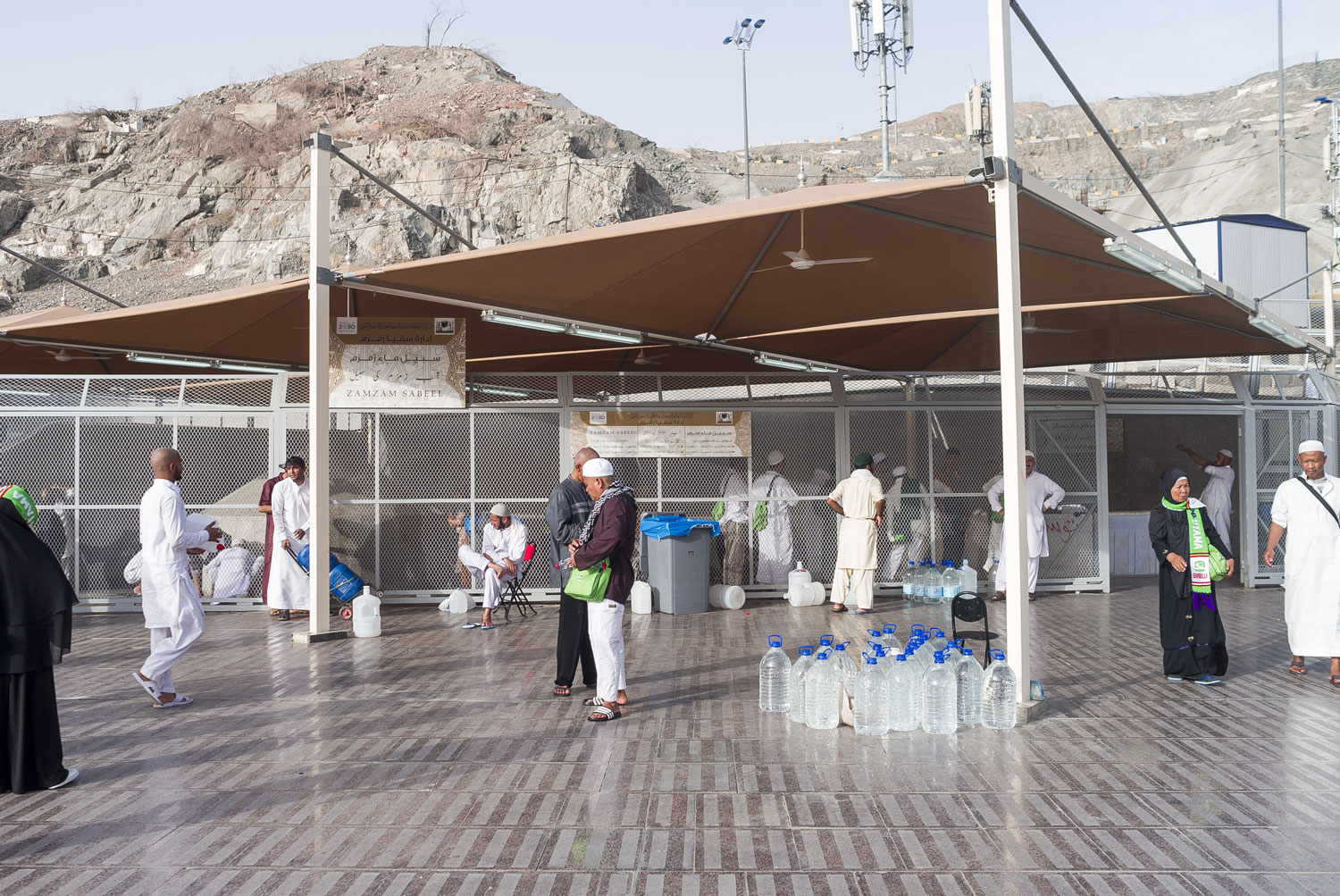
Suddenly, something strange happened. It is a library marked on the map here. But there was no library nowhere around, only an old house with a sign in Arabic. I thought that the map was not accurate and continued my way.
Only after returning from the trip did I learn that I had been standing in front of the house where Prophet Muhammad was born!
Saudi Arabia is ruled by Wahhabis. It is a movement in Islam that advocates following the Quran most strictly. Wahhabis are very unhappy with one thing: worshiping idols. As idols, they consider not only figurines of foreign gods but even the Prophet Muhammad himself.
The world is ruled by Allah. But if choosing among people, any Muslim will say, “Above all, I love the Prophet.” Not mom or dad, but the prophet.
It is this sacred love what the Saudis consider idol worship. For over a hundred years, they have been trying to root out this love from Muslims.
Wahhabi hatred knows no bounds. The Saudis, like barbarians, destroy their own shrines. Prince Faisal destroyed Eve’s tomb in Jeddah in 1928. In Medina, they leveled the cemetery where the wives, daughters, and sons of Prophet Muhammad were buried. In Mecca, they demolished the house of the Prophet’s wife Khadijah and built a public toilet in its place. During their rule, the Saudi Wahhabis destroyed more than 300 shrines and 90% of historic mosques. All of this is due to their obsessive paranoia about idols and plurality of gods.
Muhammad’s house in Mecca miraculously remained untouched. But all the signs were removed from it, and on the map, they managed to mark it as a library so that no one would know about this place.
Saudi propaganda has done its job. Even on the web it is difficult to find photos of the house.

Well, and behind it begin completely non-touristic neighborhoods.
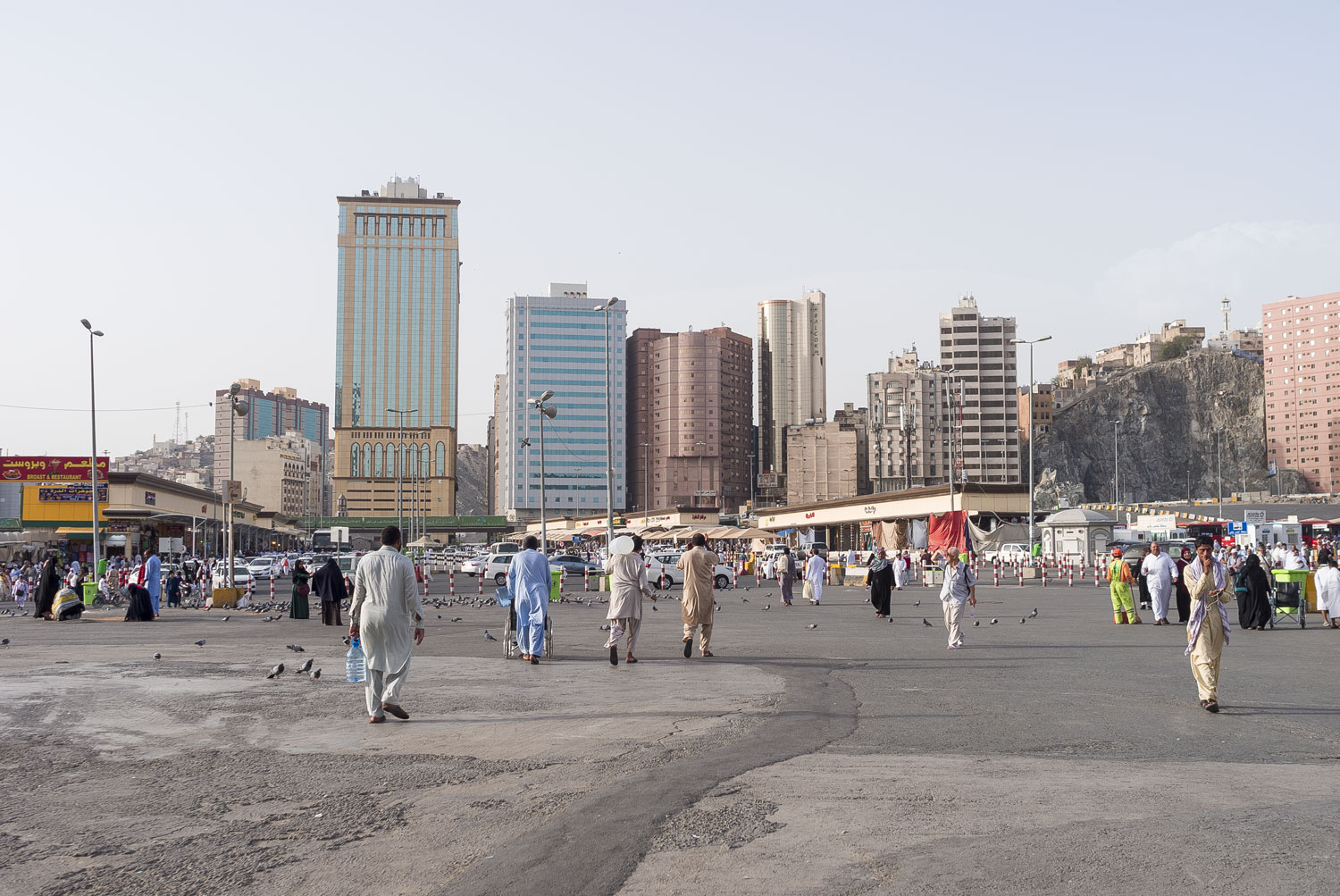
A local grease pit catches the eye.
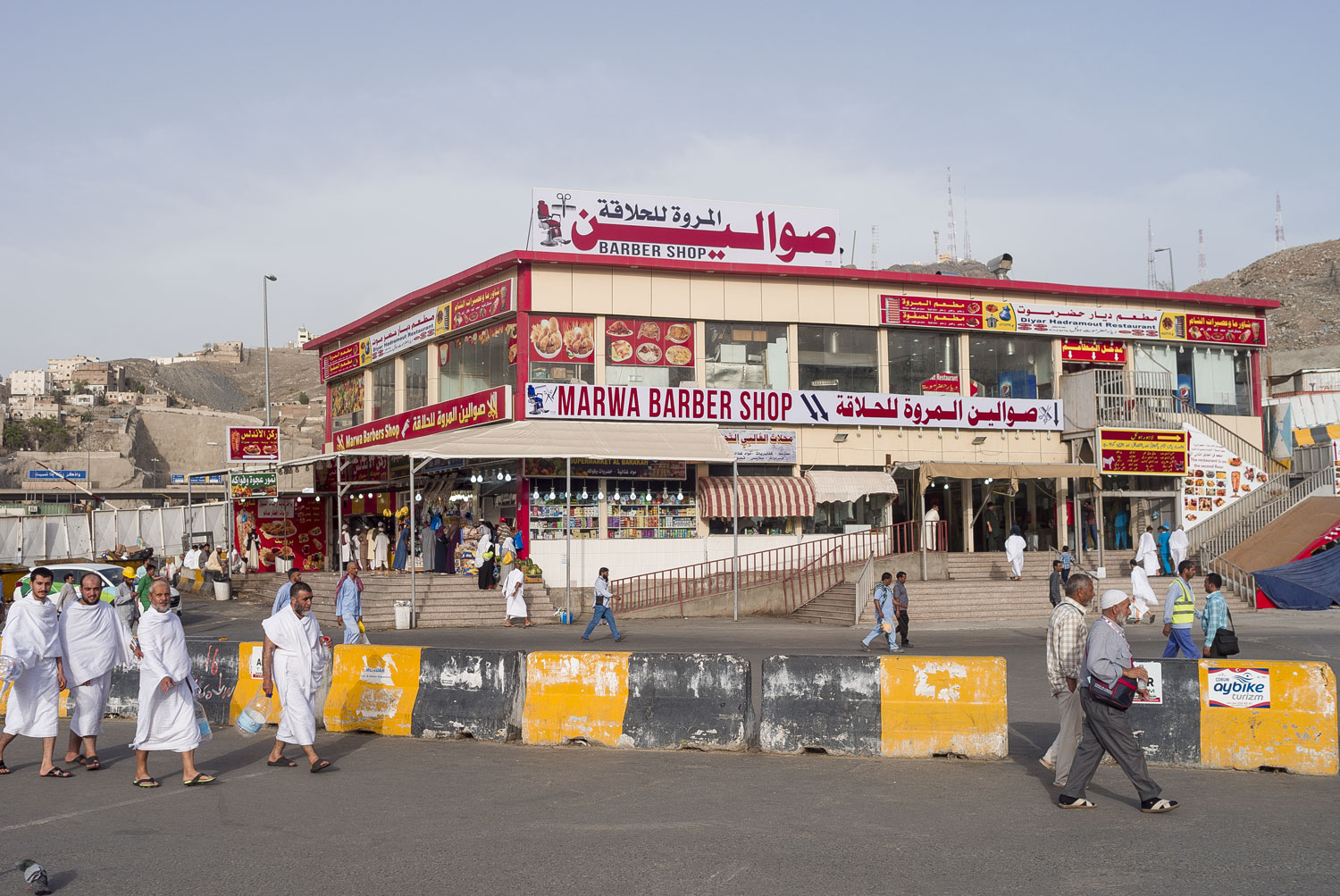
Floats by a feeble bazaar, shrinking against the backdrop of a giant skyscraper.
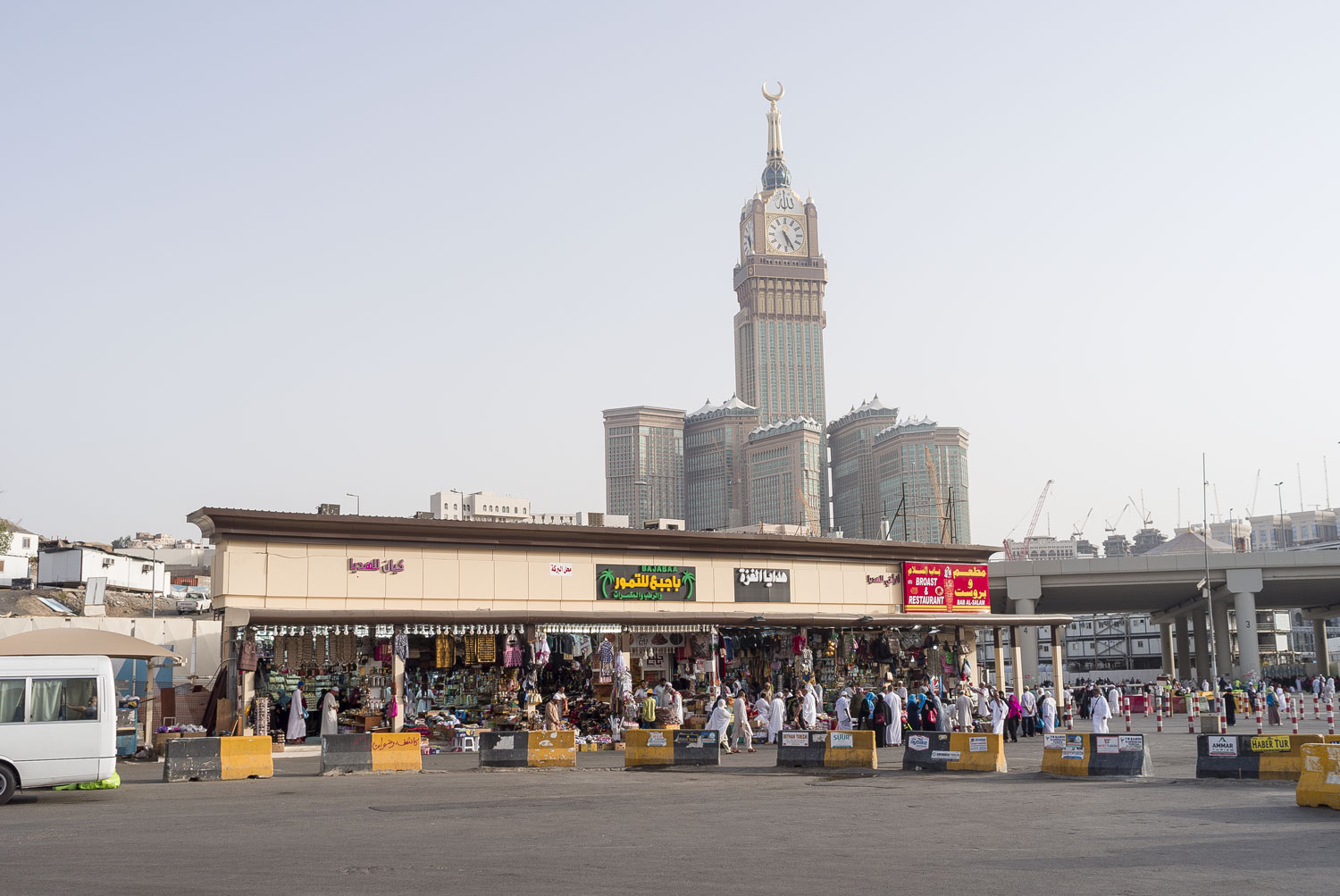
Again apearing cheap hotels, growing into rocks.
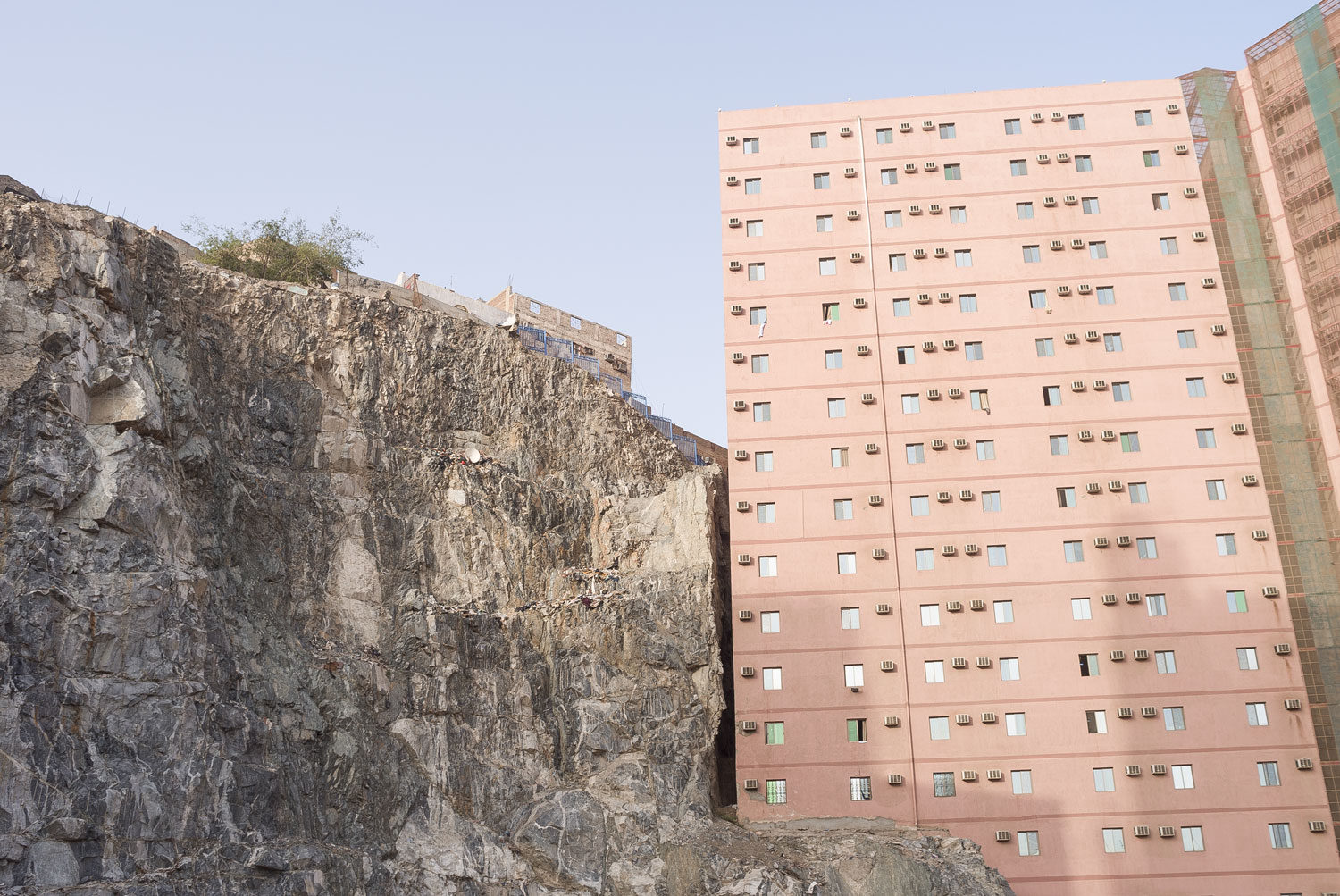
Saudi Arabia is a country of facades hiding brutal poverty.
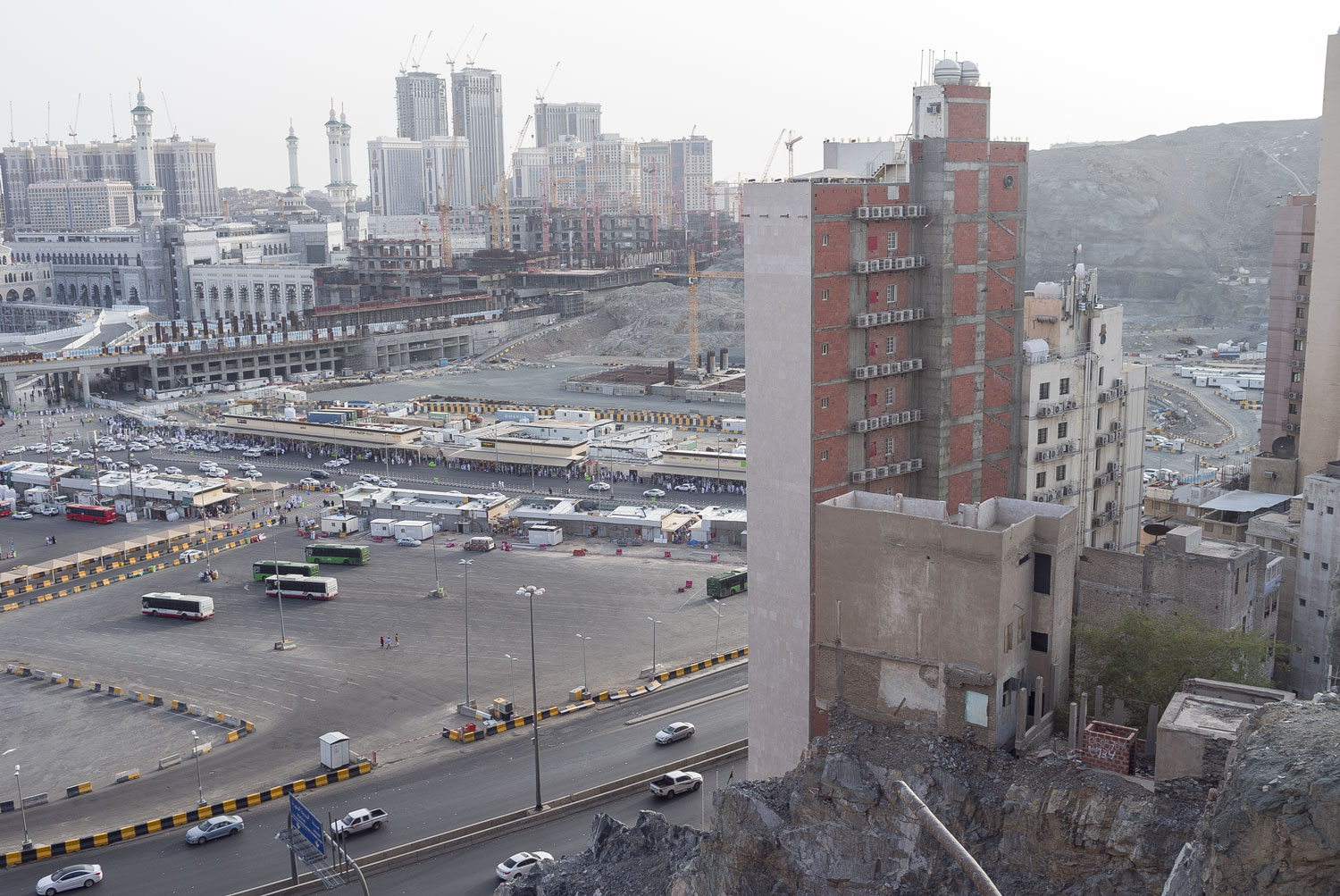
This is how ordinary people live in Mecca. Among garbage and debris, in dilapidated and decaying shacks without running water or amenities.
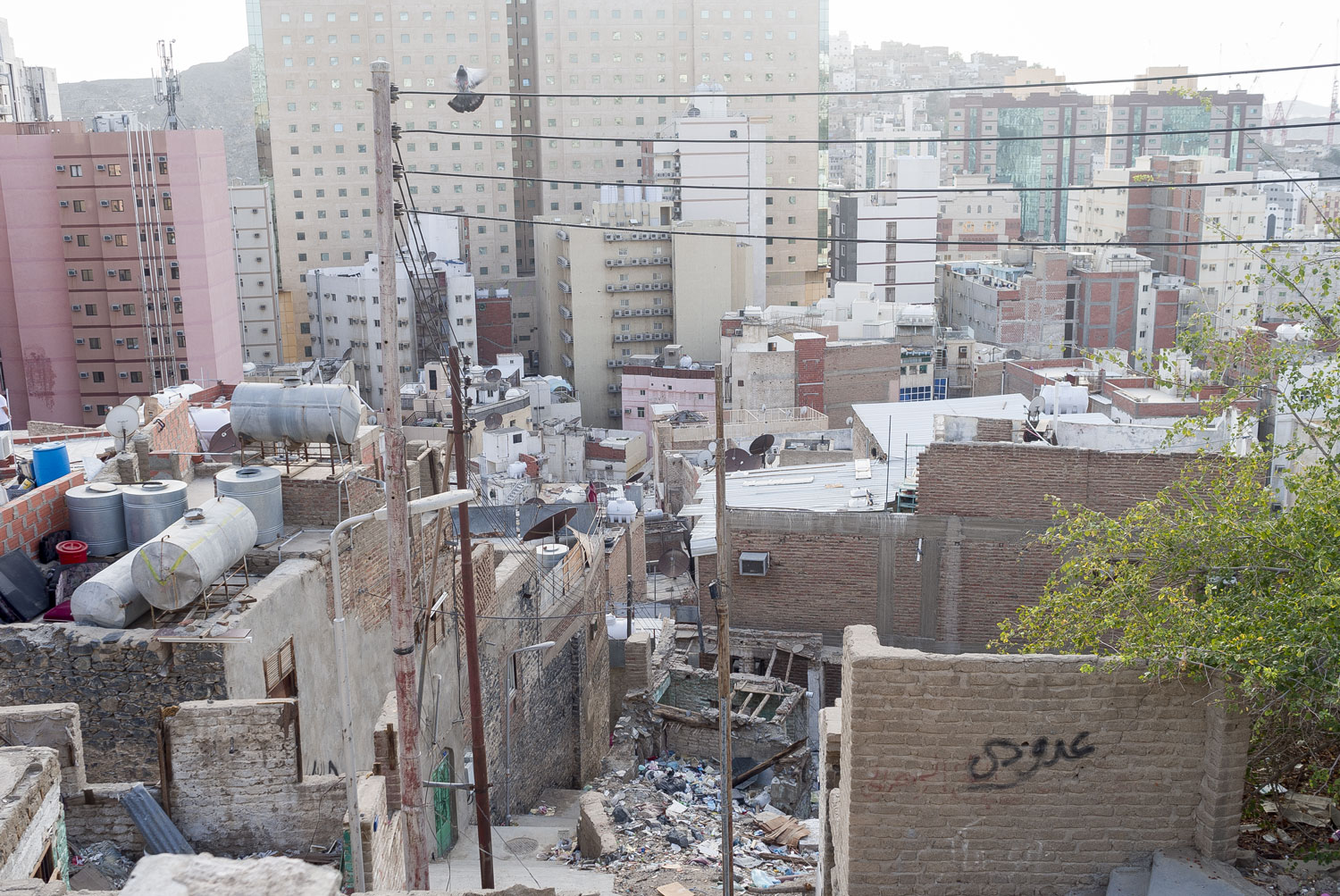
These places offer a beautiful view of Mecca.
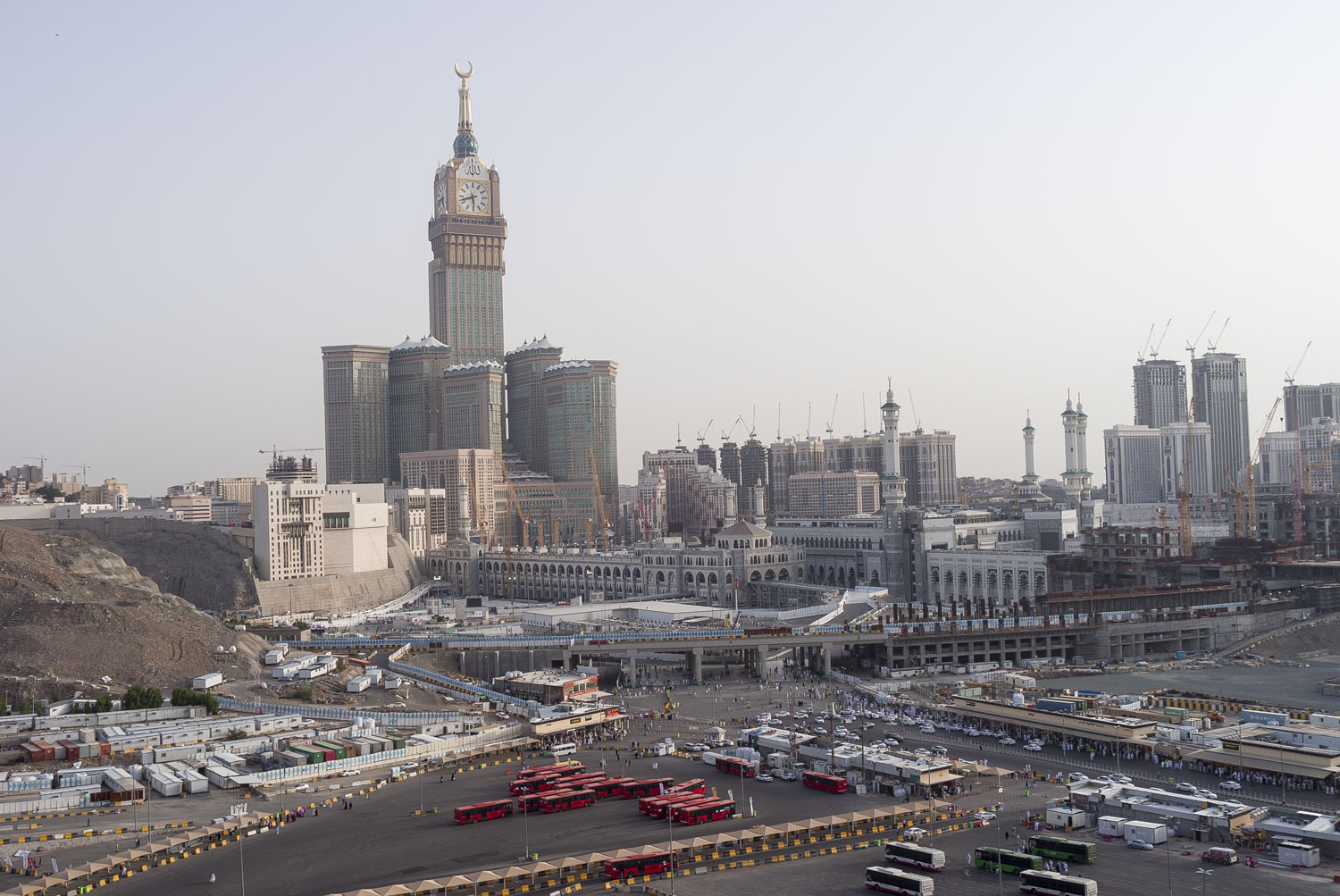
Every day, residents of the slums come out to the parapet on the edge of the cliff and watch all this wealth not-for-them. Slum dwellers do not go to pray in the Forbidden Mosque. Perhaps only on Fridays. It is too difficult for them to descend from their mountain, walk many kilometers on foot, and then climb, in sweat, the mountain again.
There is a small, cozy mosque in the slums. Perhaps it is not cleaned with the same diligence as Al-Haram, but no ones care much: these houses has such conditions that you will catch a disease anyway.
I am waiting for darkness to take the last photo of Mecca.
Several teenagers sit down next to me with a teapot and a bag of nuts. They don’t immediately decide to start a conversation.
“Salam alaikum!”
“Wa alaikum assalam!”
“Mmm... Arabiya? No? Ana min Saudi Arabia,” the teenager doesn't speak English and uses gestures to ask where I'm from.
“Rusiya.”
Silence falls. It seems like the guys want to tell me that it’s very cold in Russia. They say something in Arabic, but I don’t understand. Finally, they offer me:
“Tea?”
“Oh yes, habibi. This word I know. Pour it.”
The guy pours me tea and takes out nuts from the bag. One at a time, all different. As he hands me each nut, he tells me its name, thinking he’s teaching me Arabic. Handing me each nut, he says, “Bismillah.” And I answer, “Bismillah.”
Darkness quickly sets in over tea. I place my “Leica” on the parapet, aim the lens at the skyscrapers, and set the camera for a long exposure. The teenagers watch with interest. After half a minute, the shutter clicks, and the last photo from my trip appears on the screen.
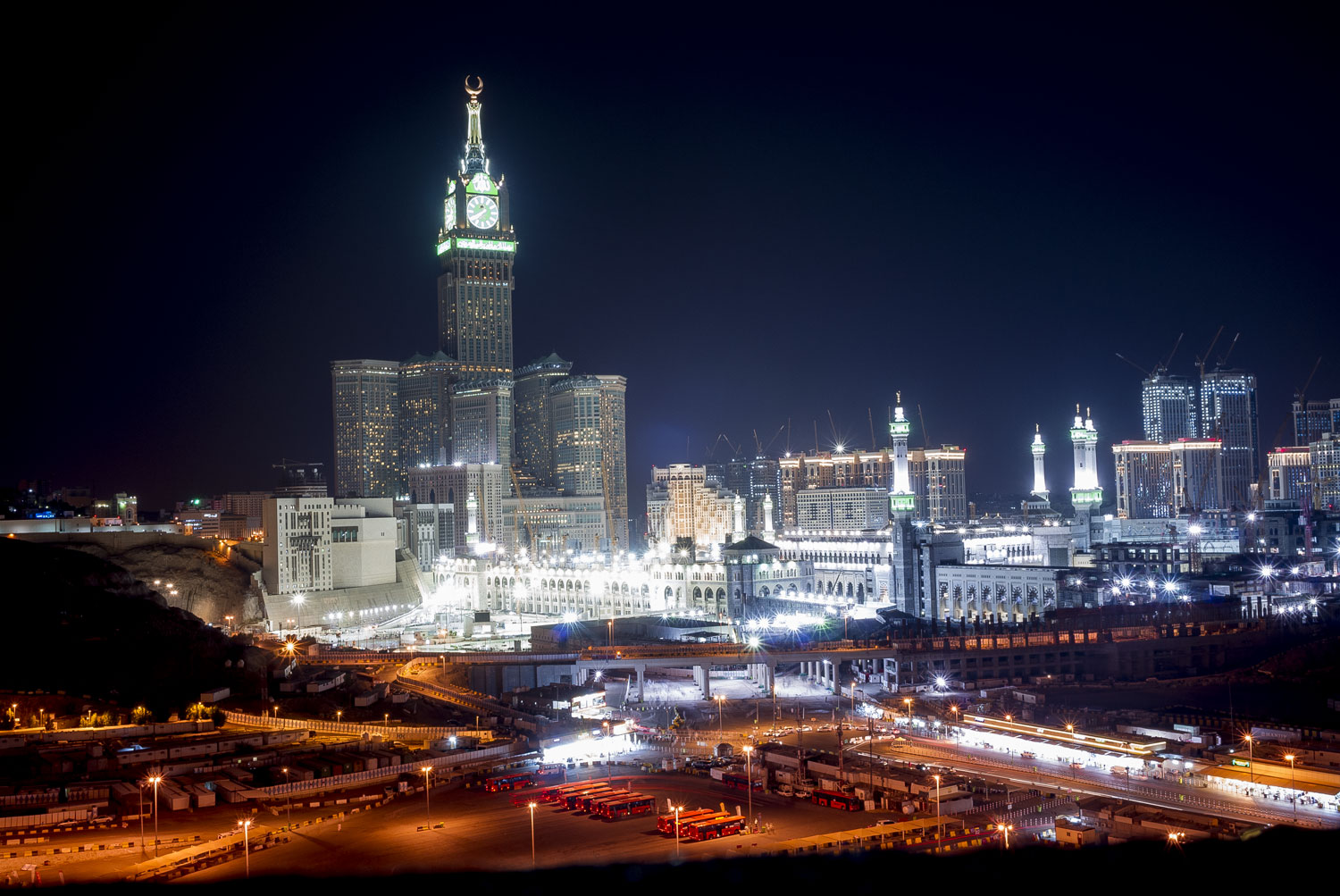
“Well, guys? Ma as-salama!” I bid them goodbye.
“Inshallah,” they reply. “Don't you want more tea?“
No I don’t.
Soon is coming night prayer, and I don’t want to stay here and spend it in the local mosque, studying the unwashed floor and dirty heels of the Arab proletariat.
This is the conclusion, Reader. Come on, we gotta get out of here. Maybe we still have...


